
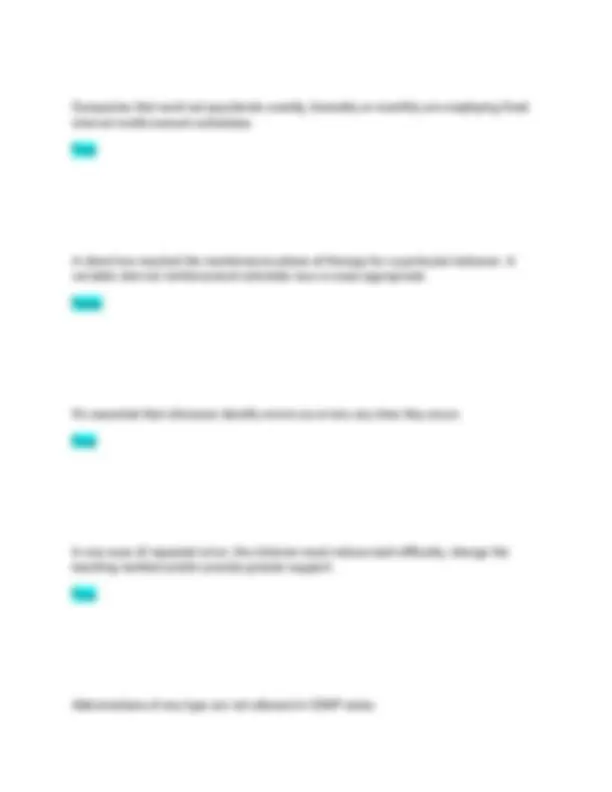
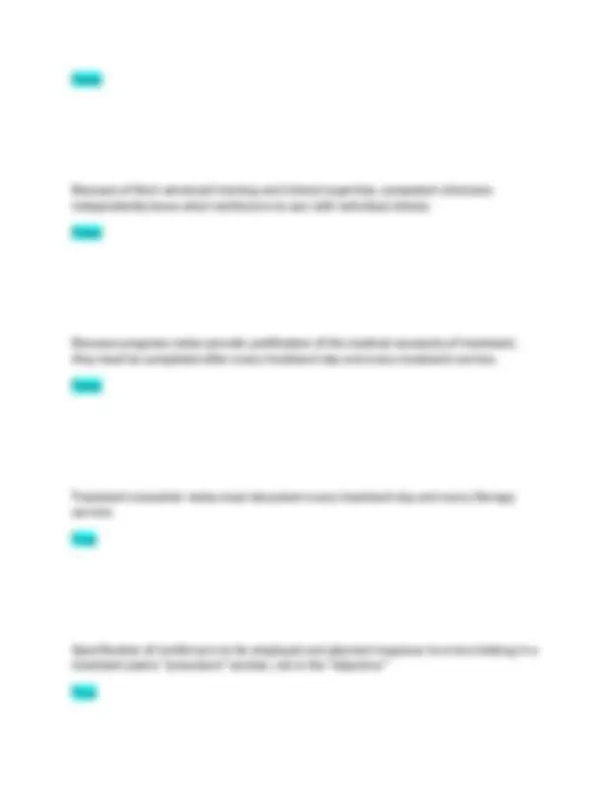
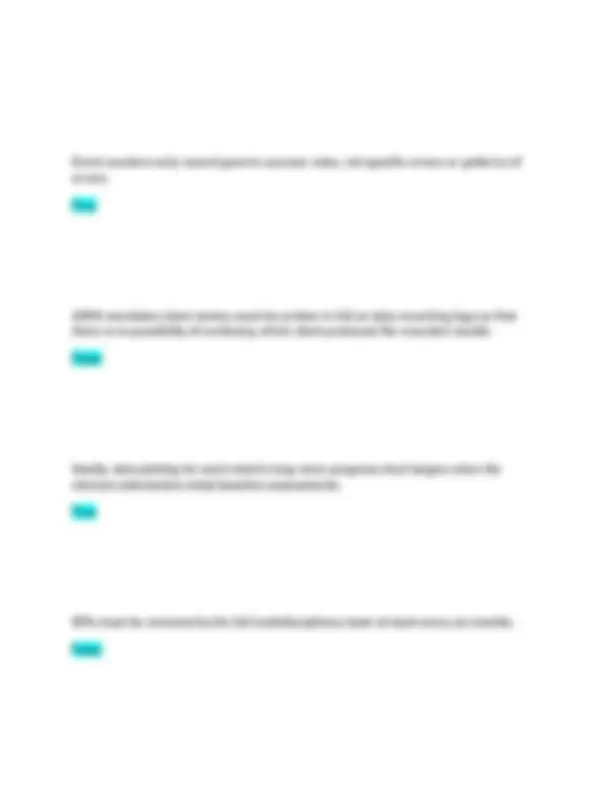
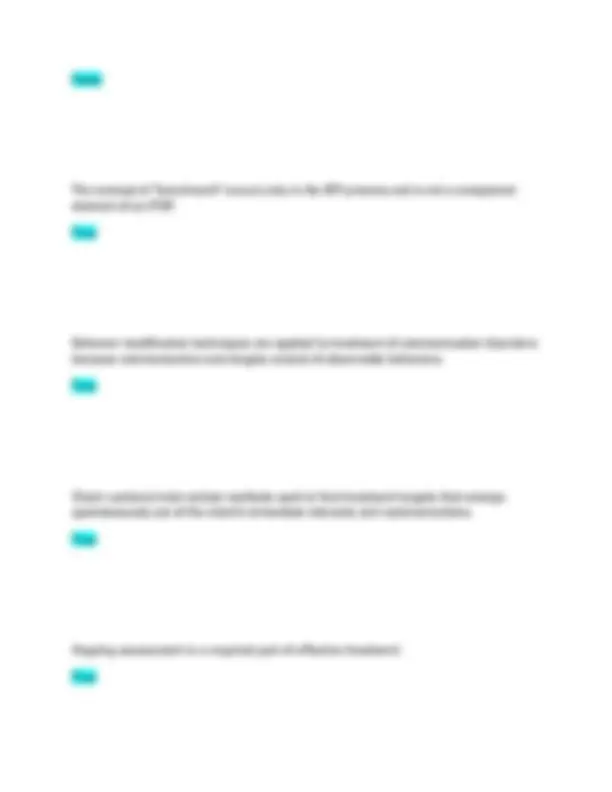
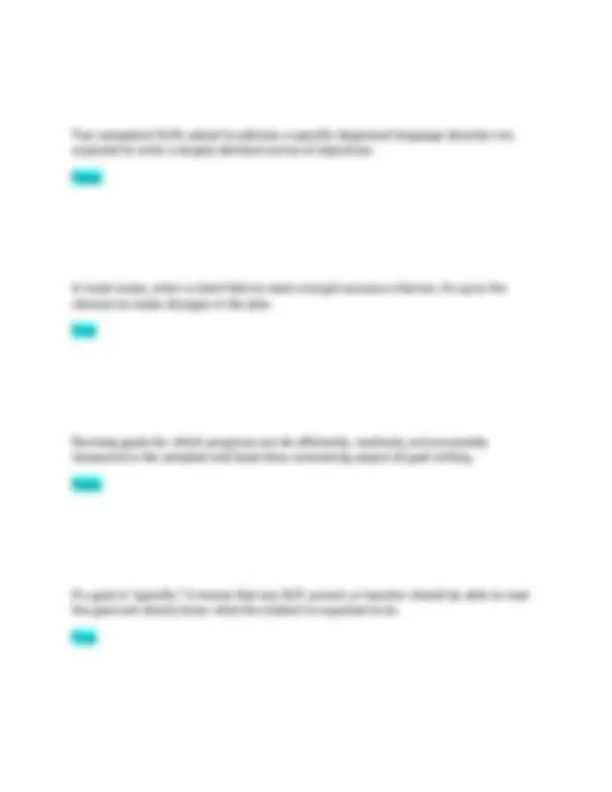
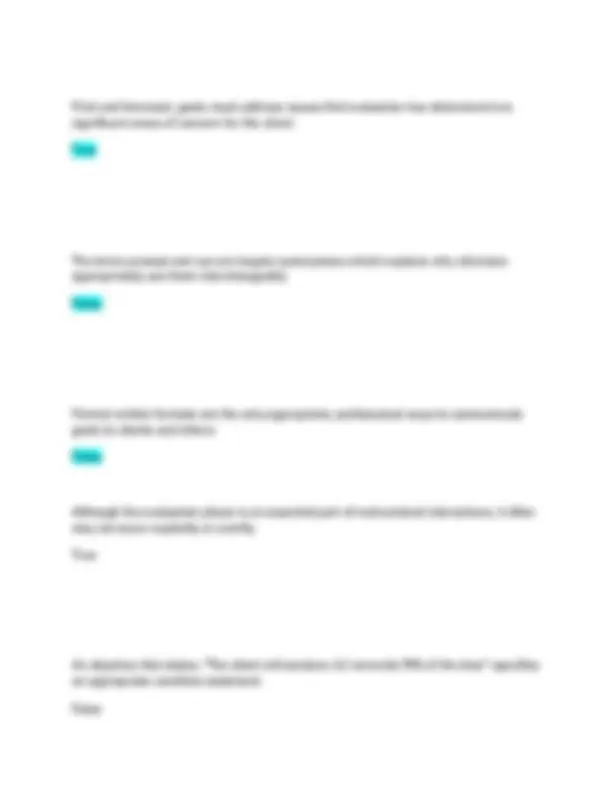
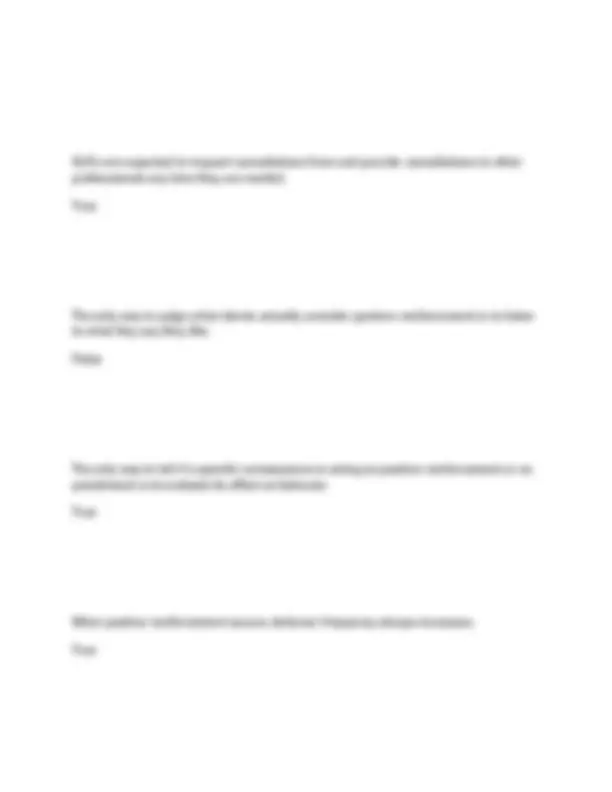
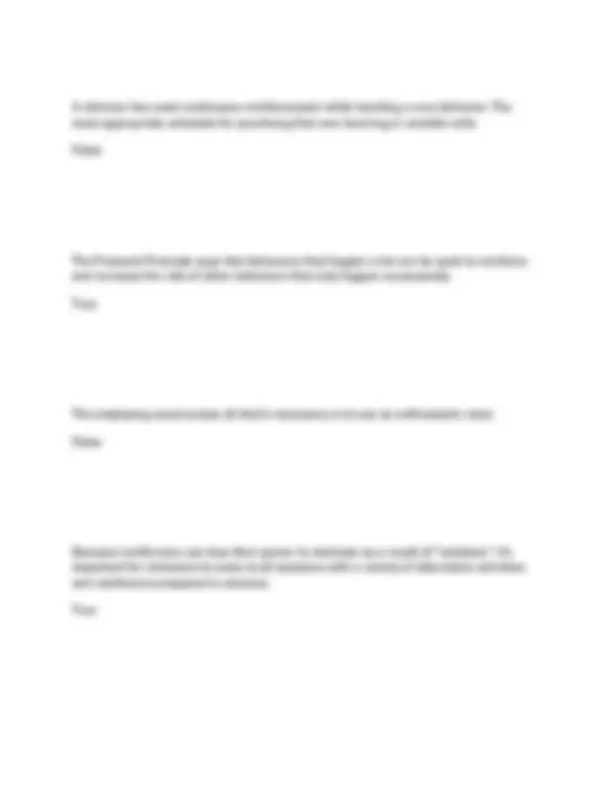
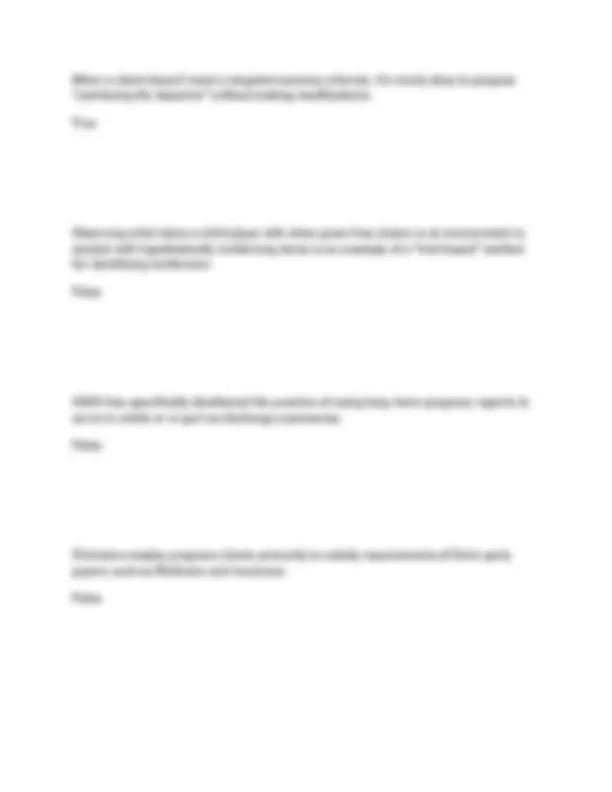
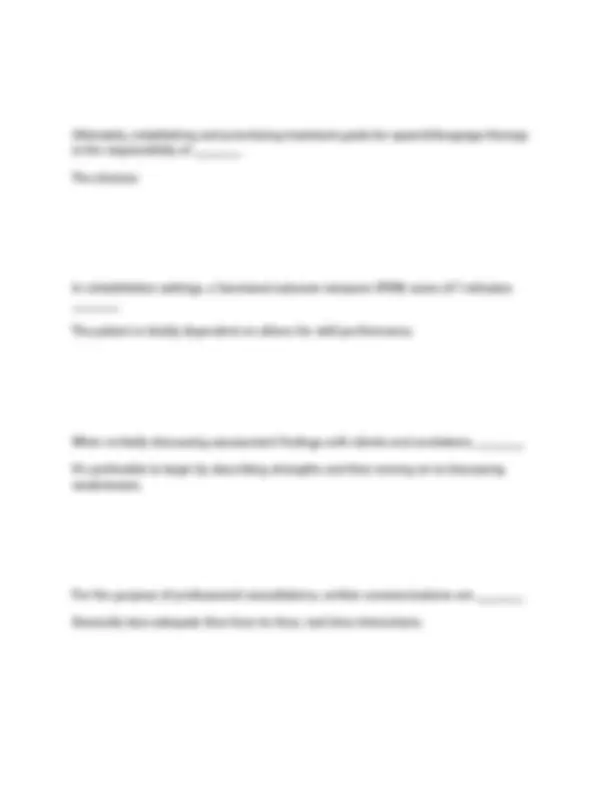
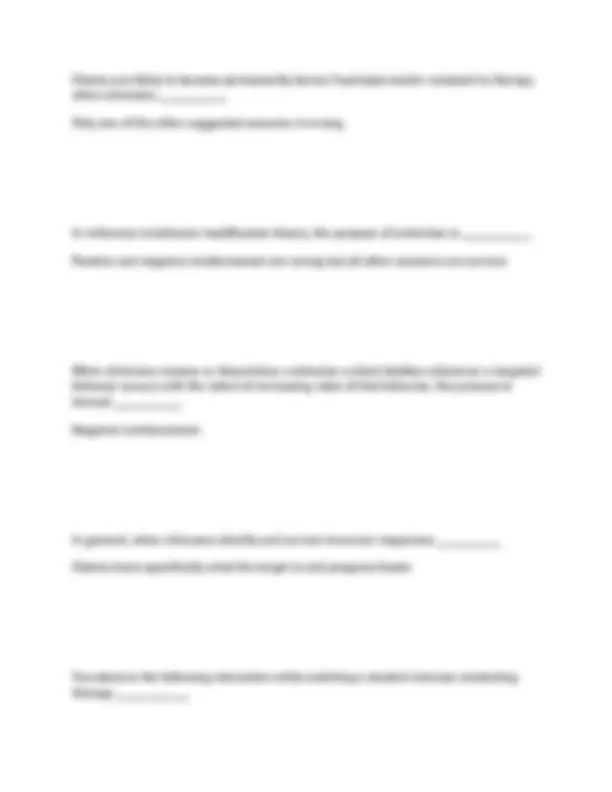
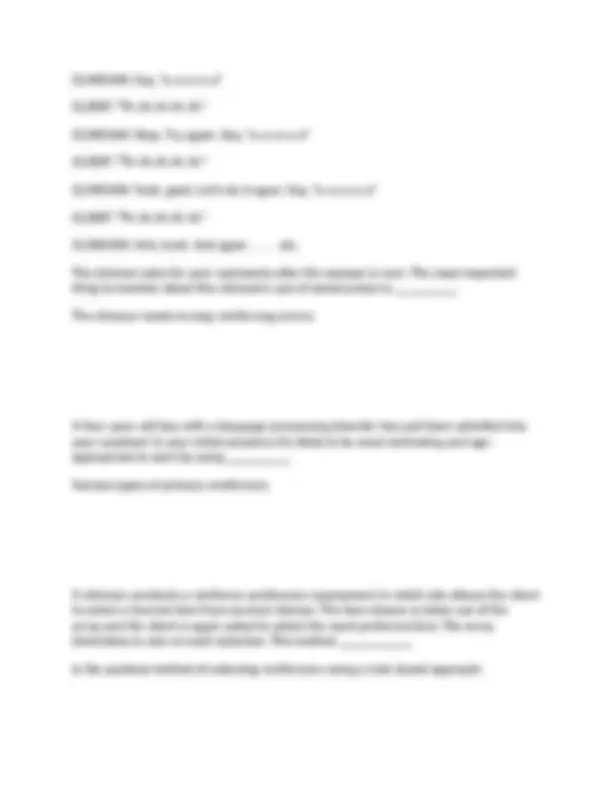
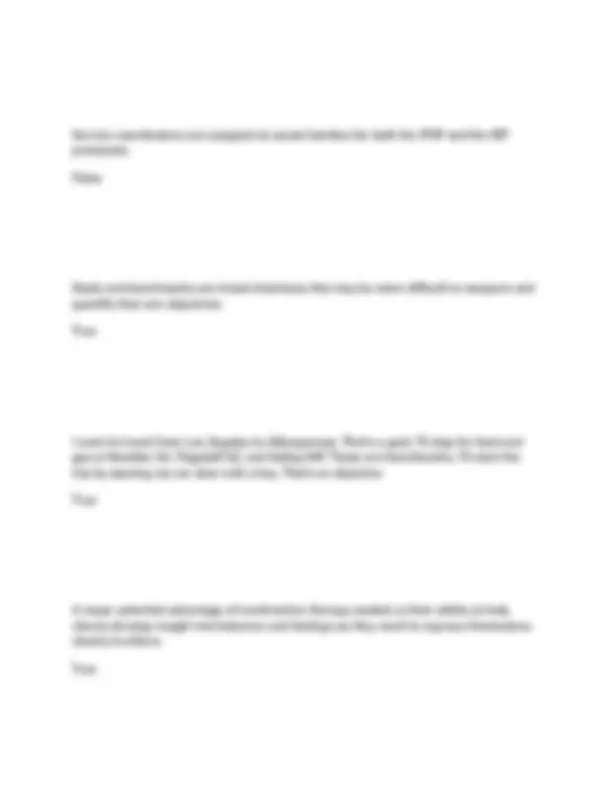
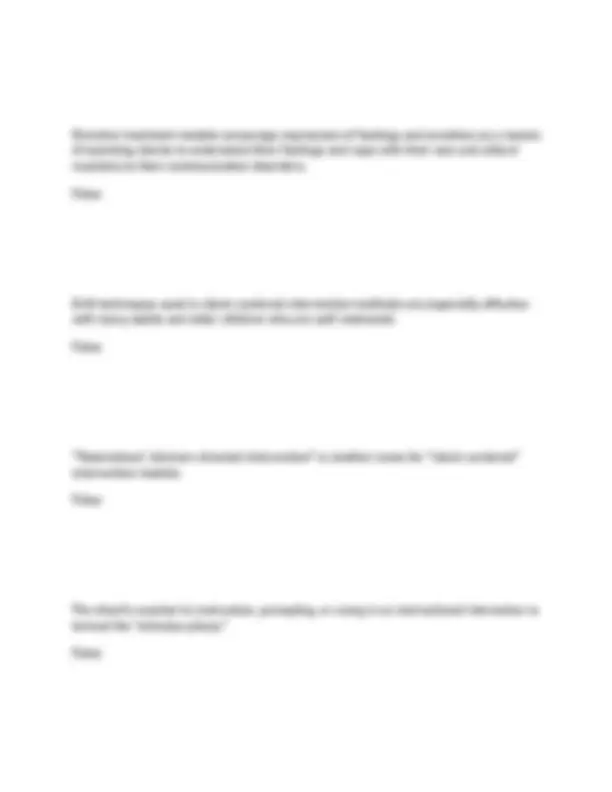
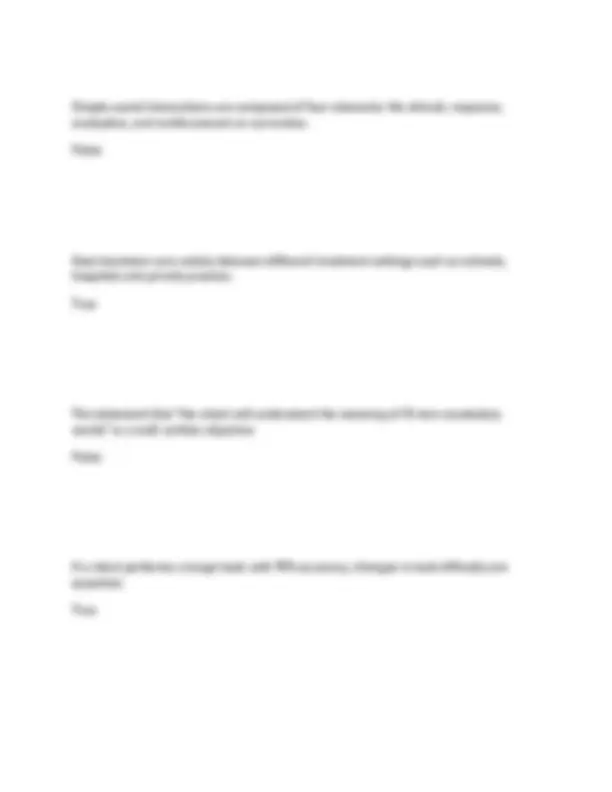
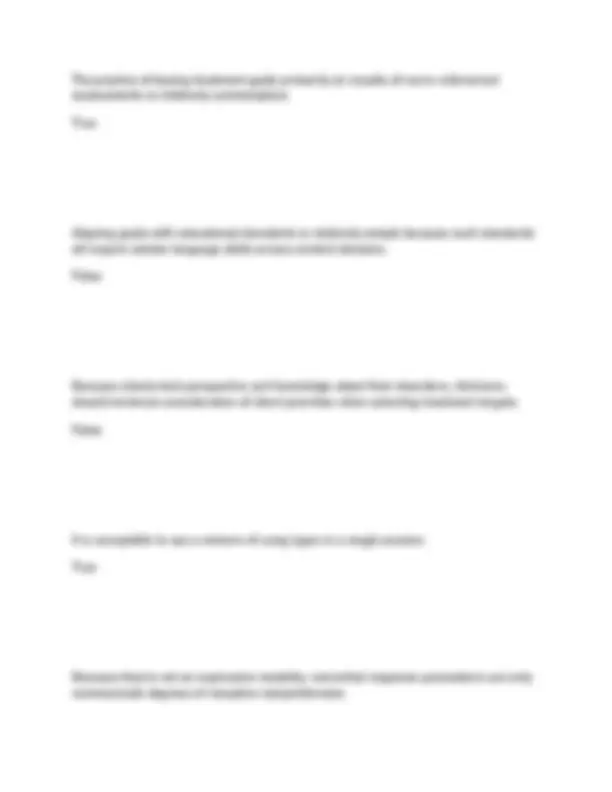
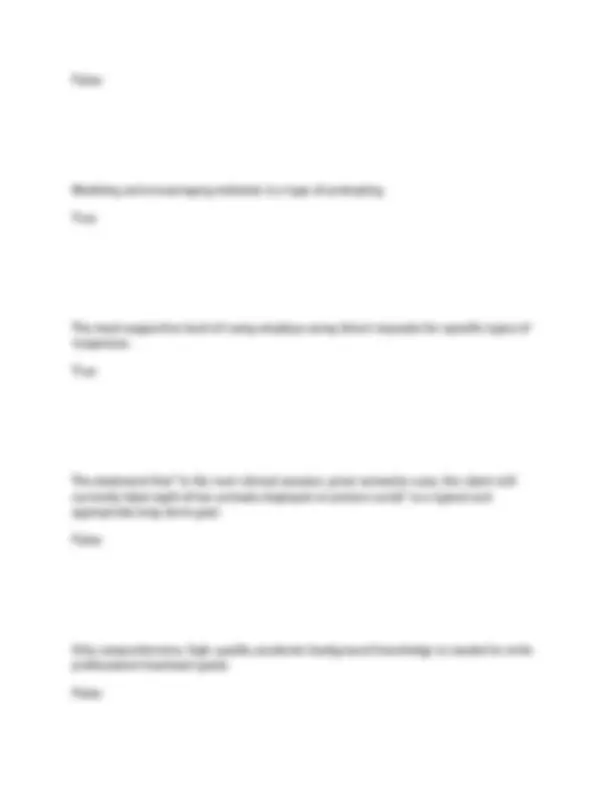
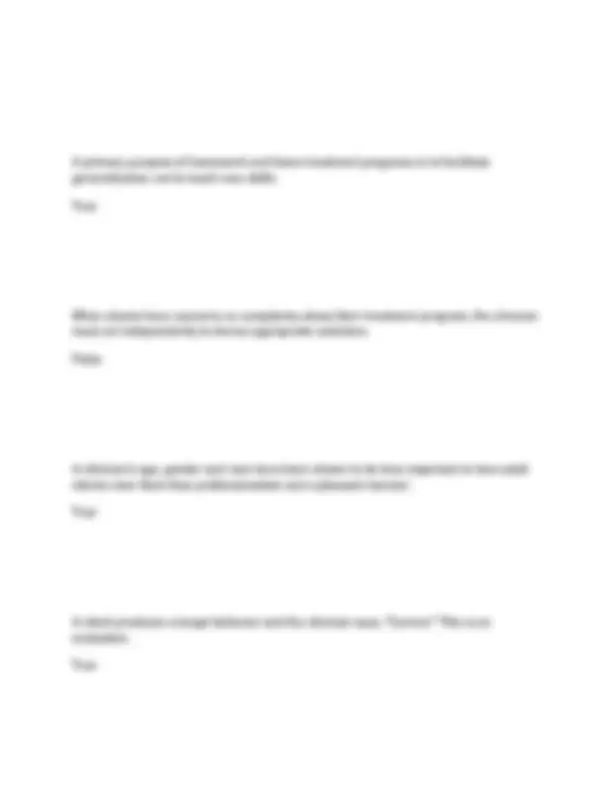
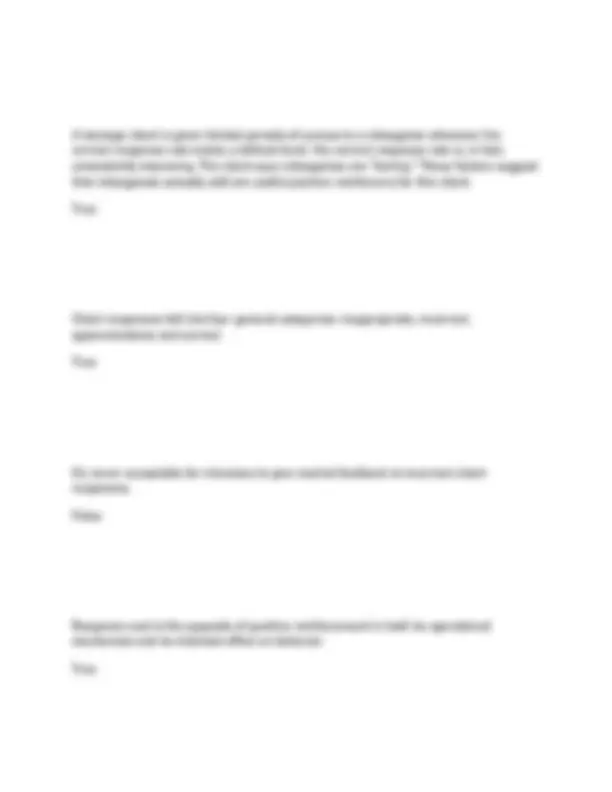
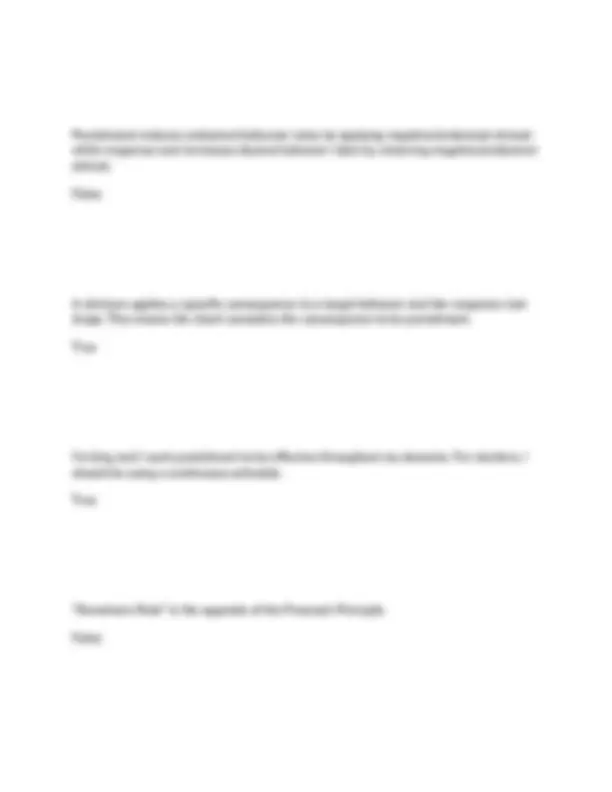
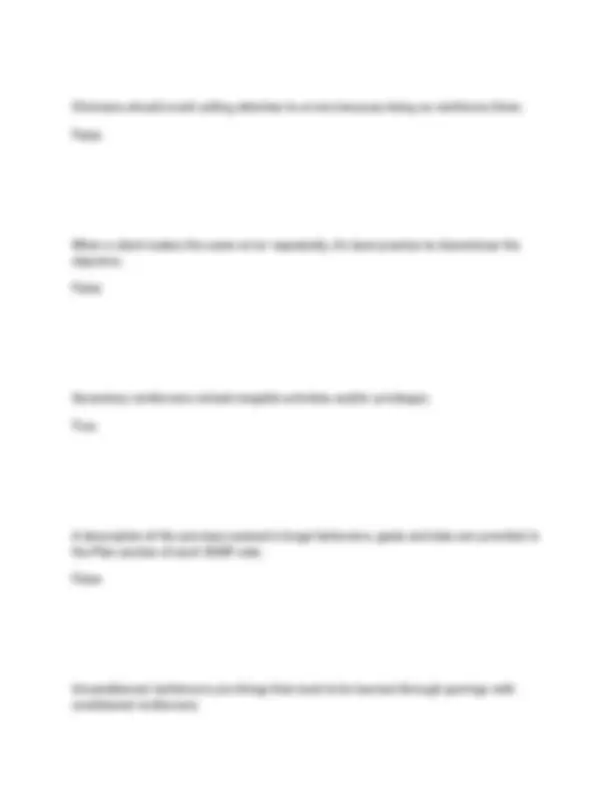
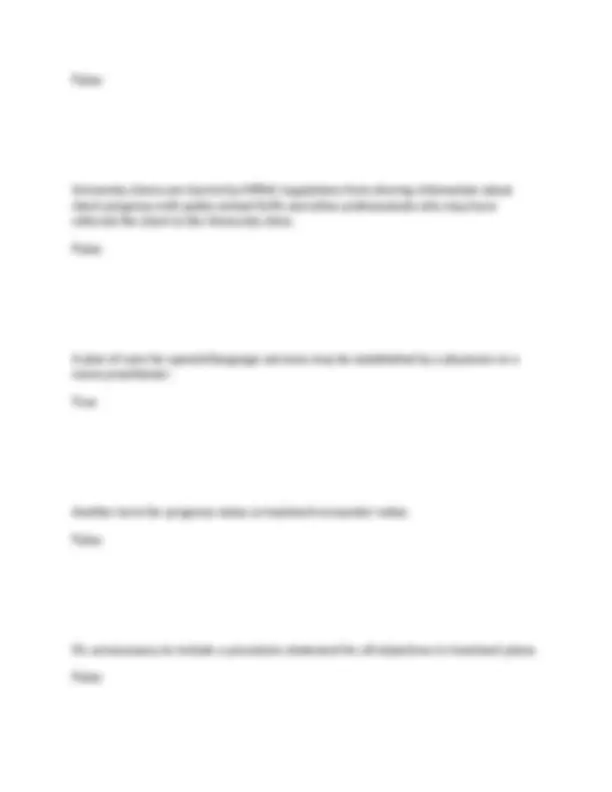
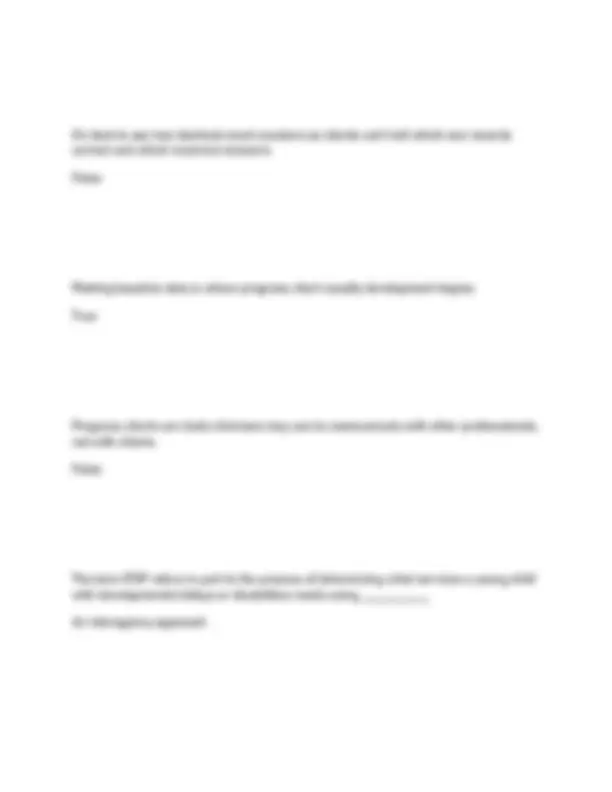
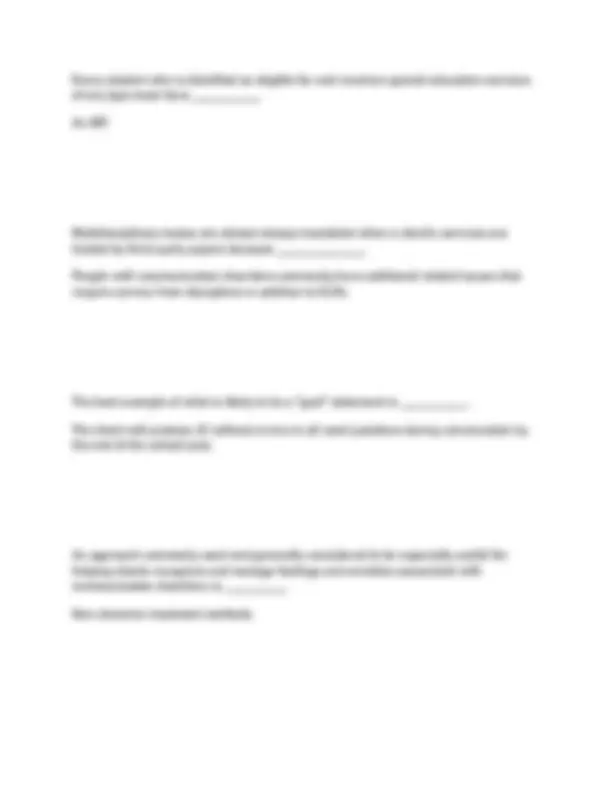
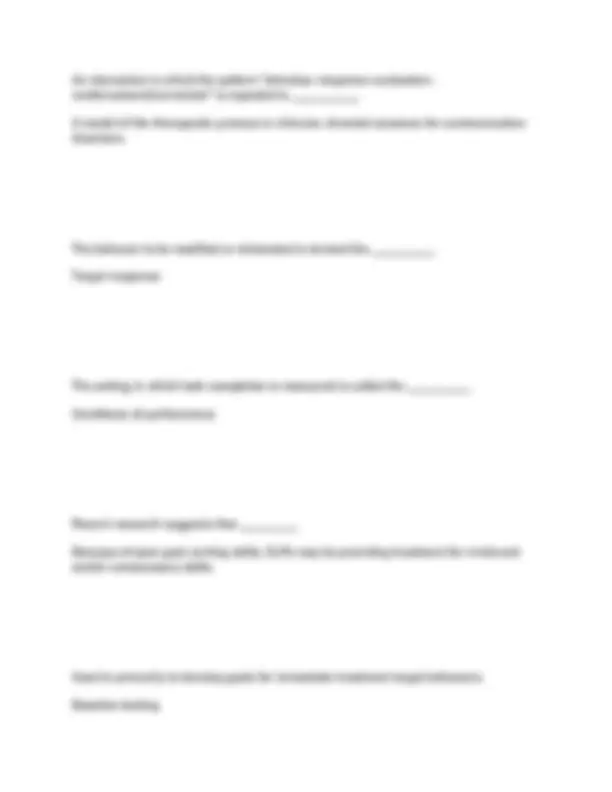
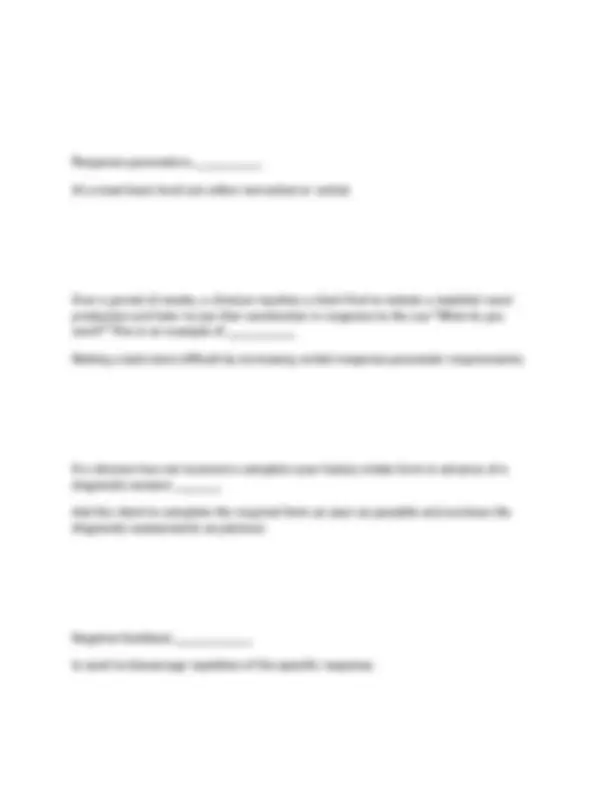
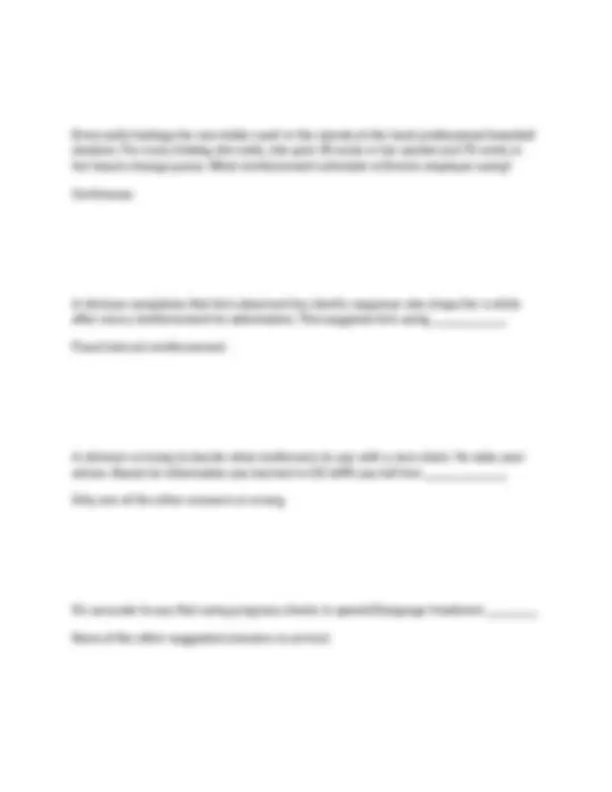
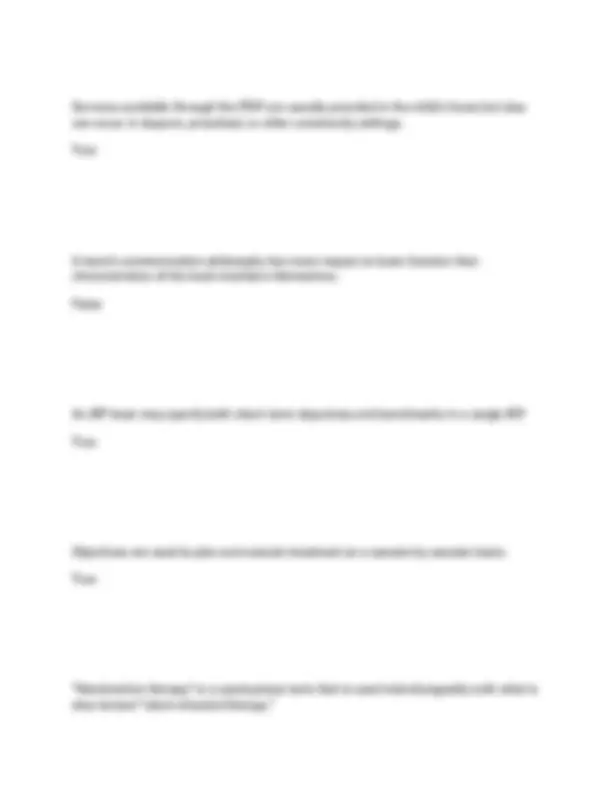
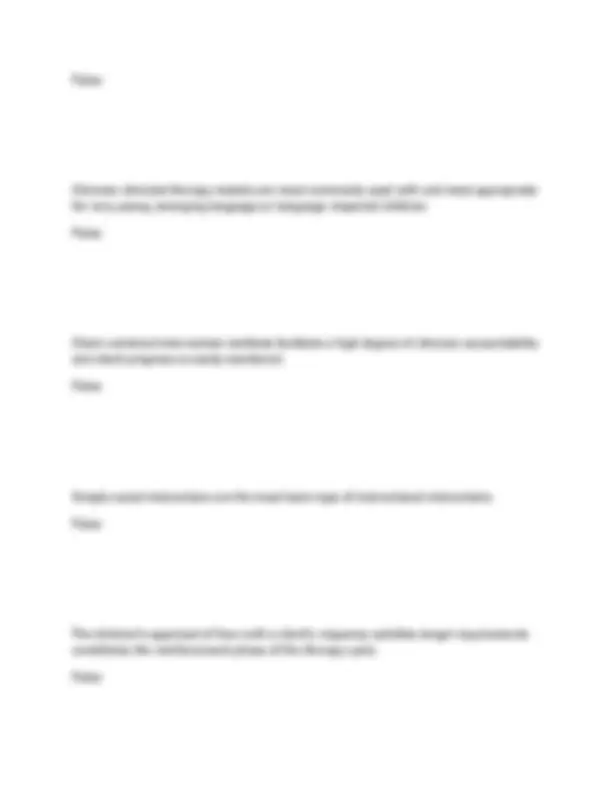
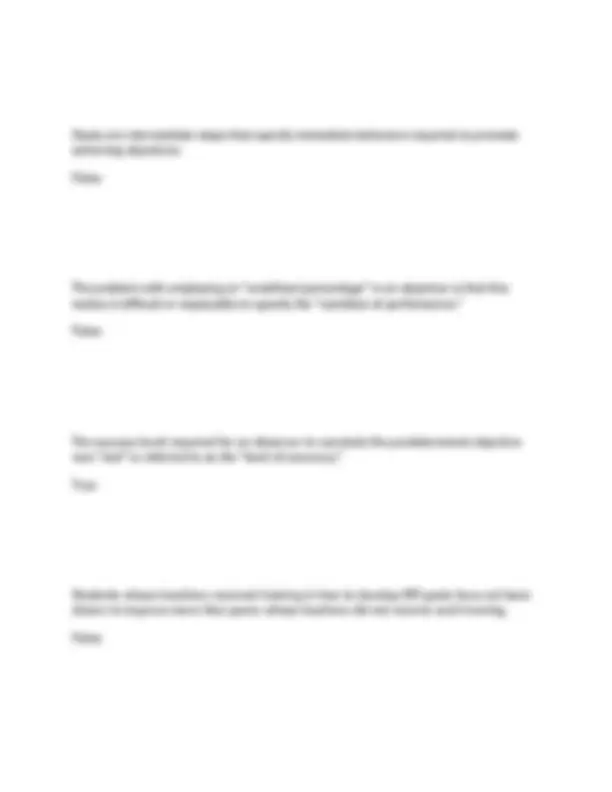
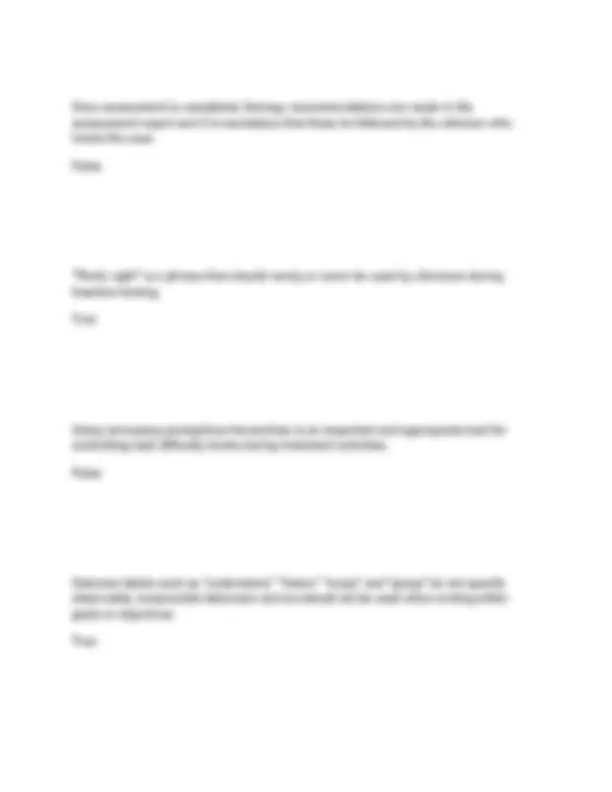
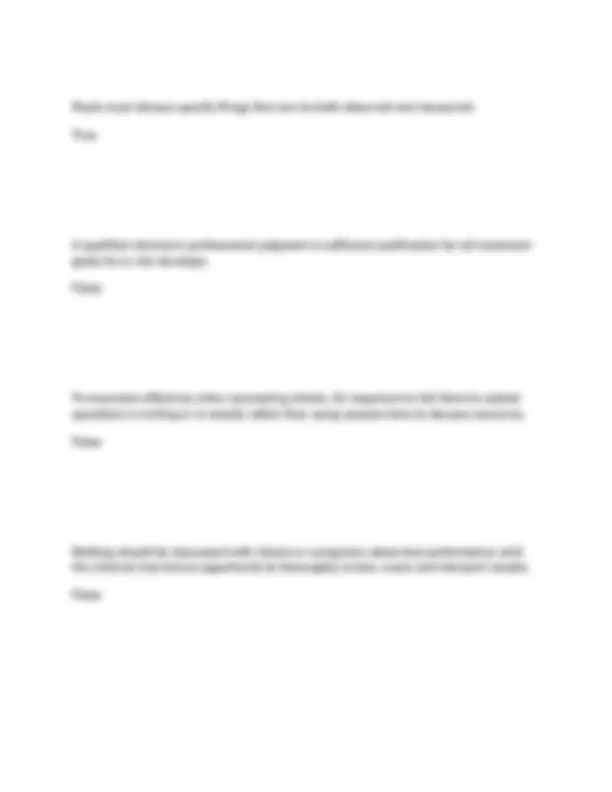
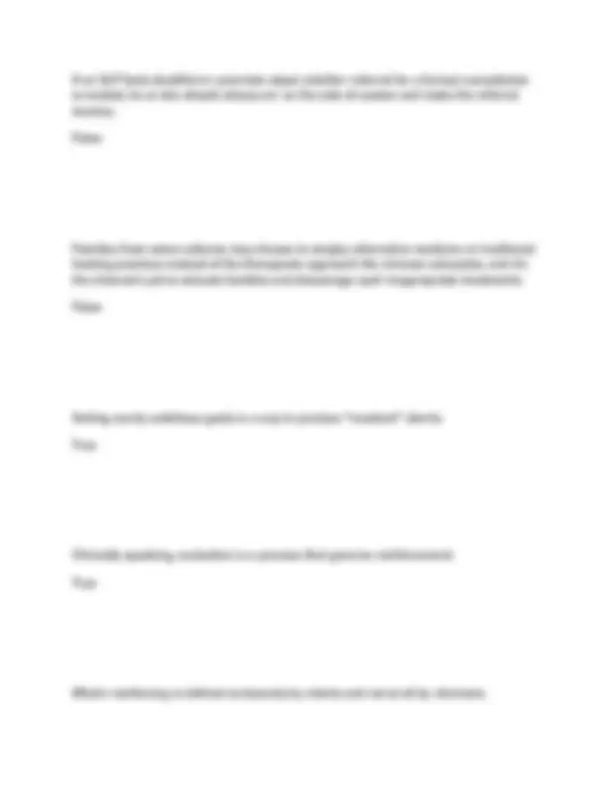
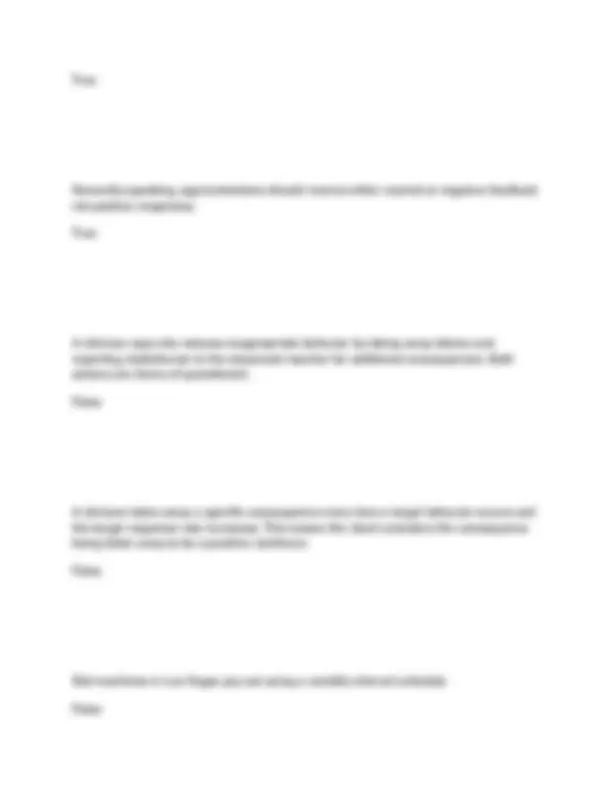
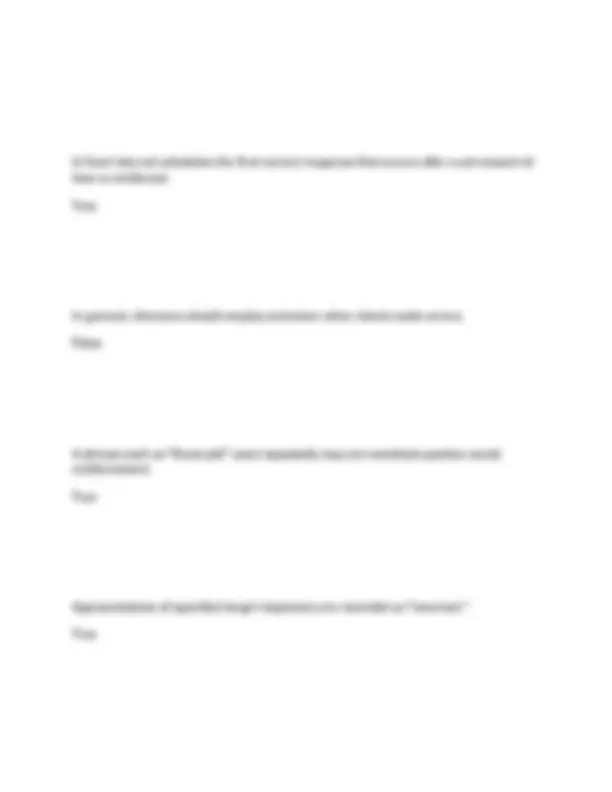
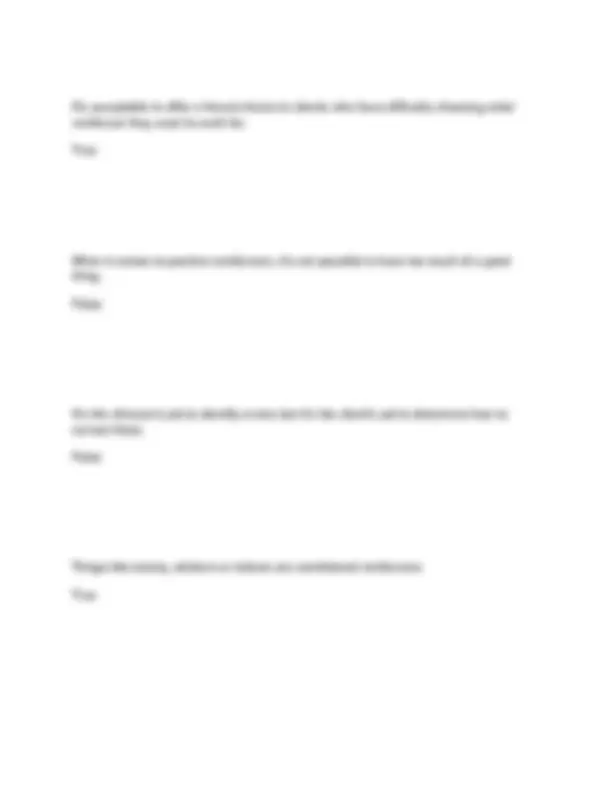
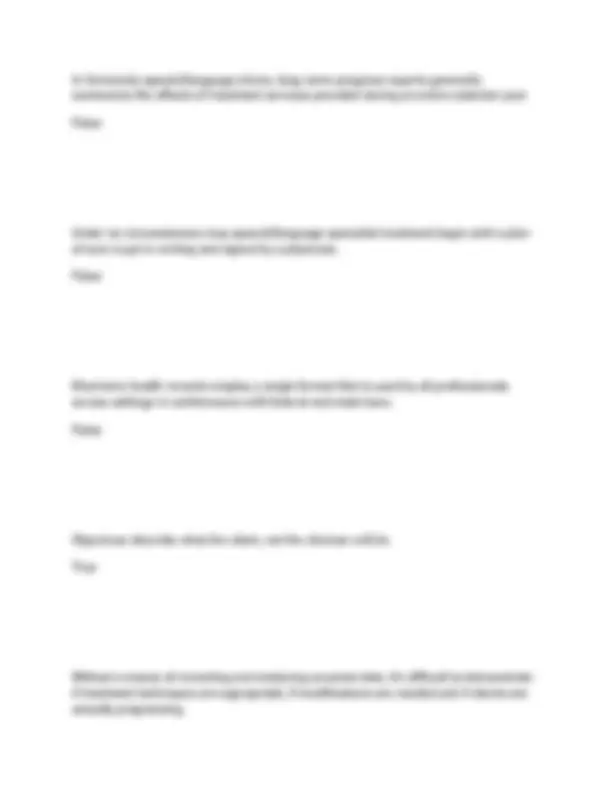
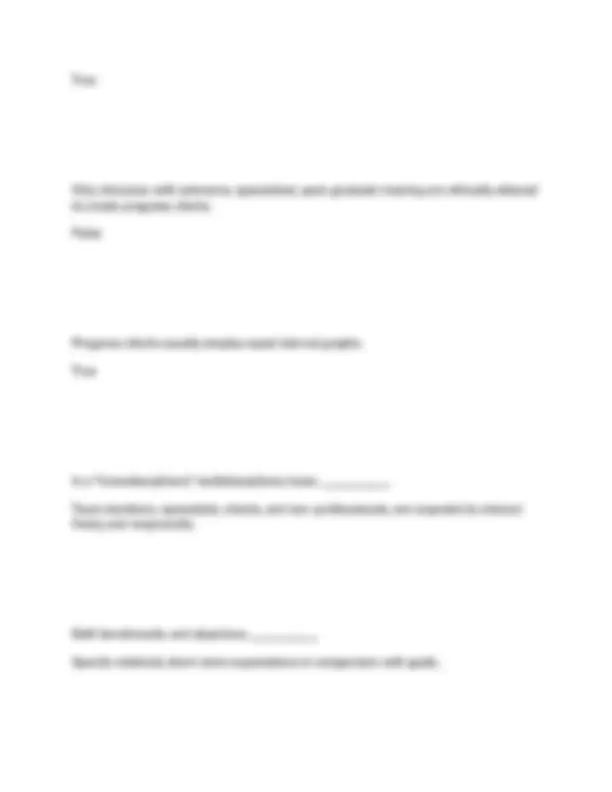

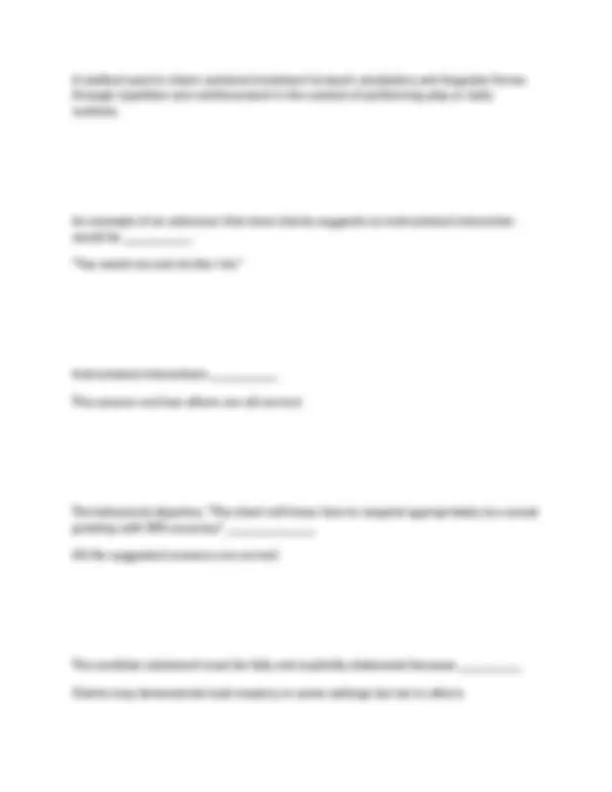
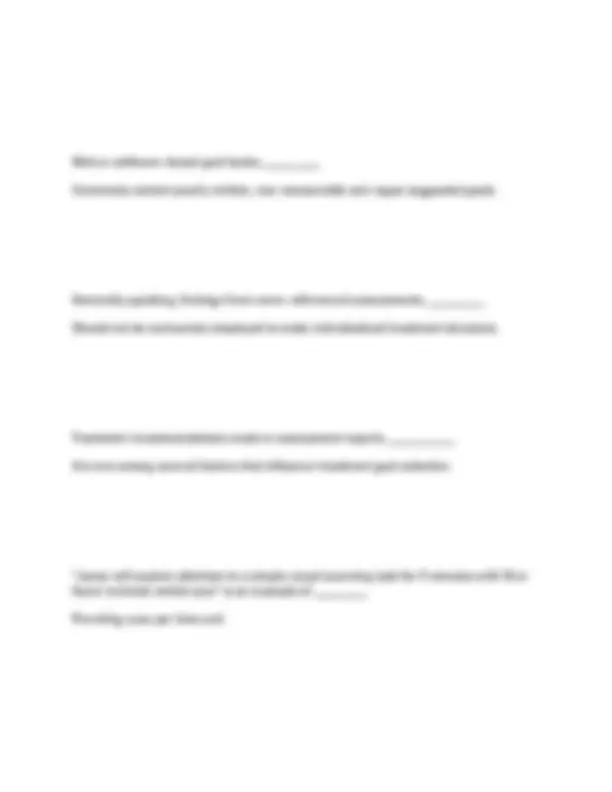
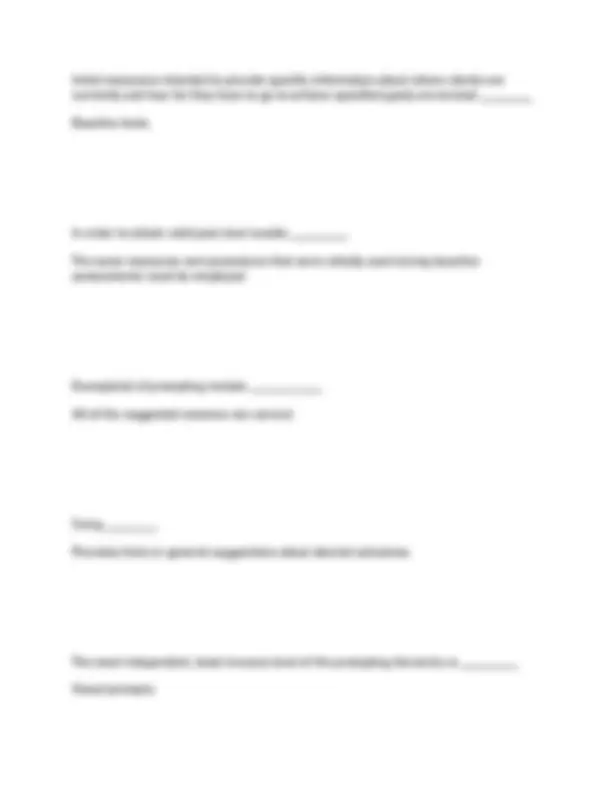
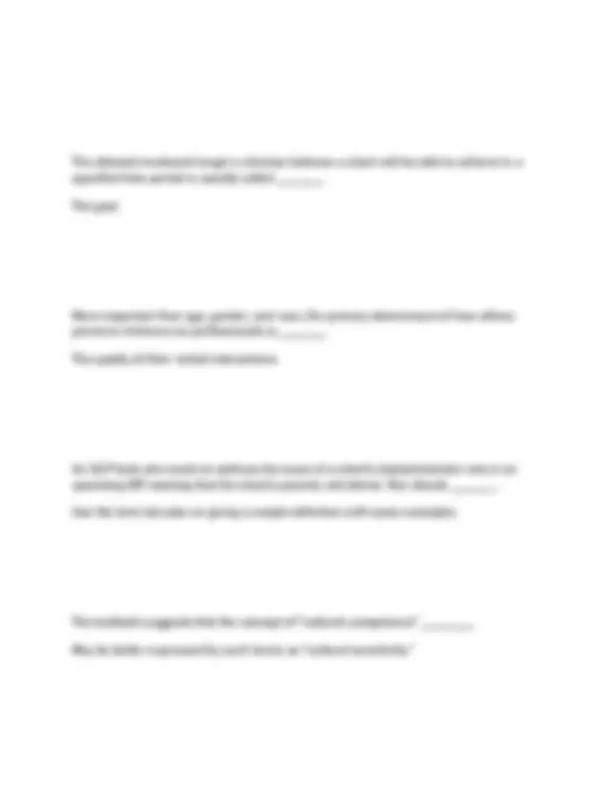
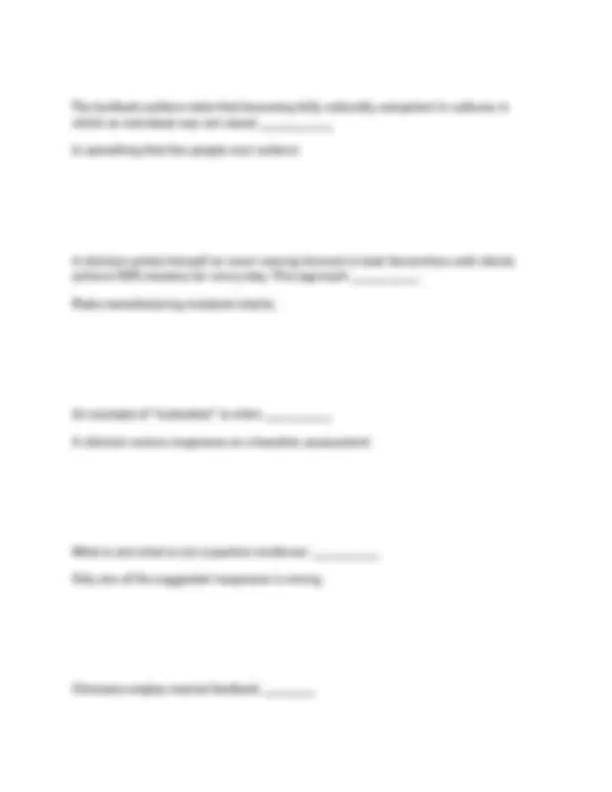
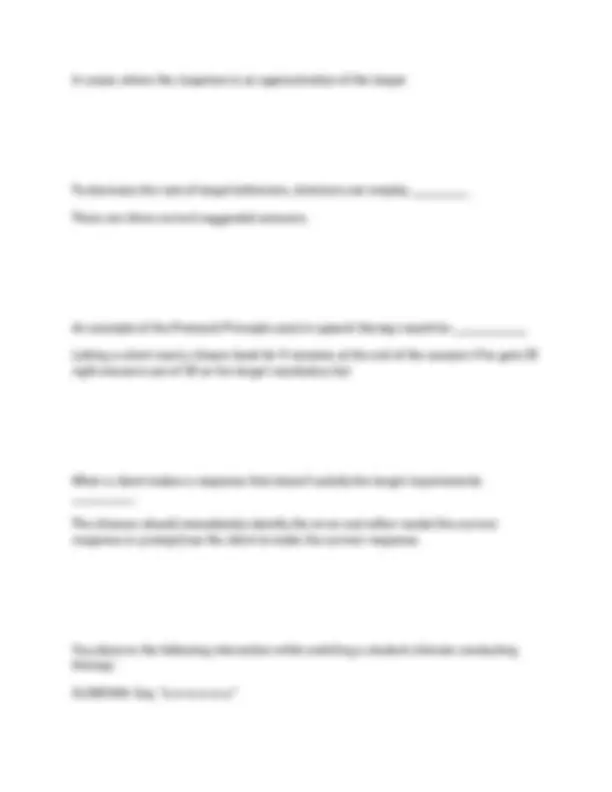
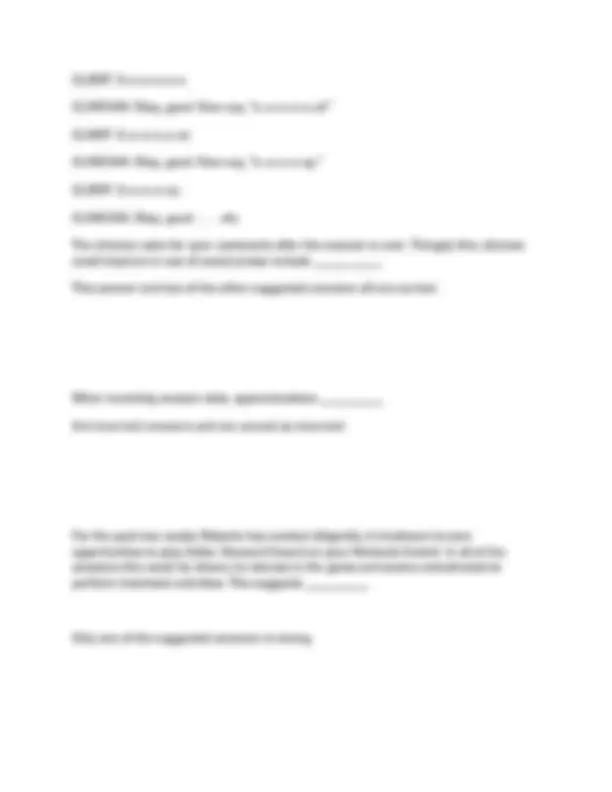
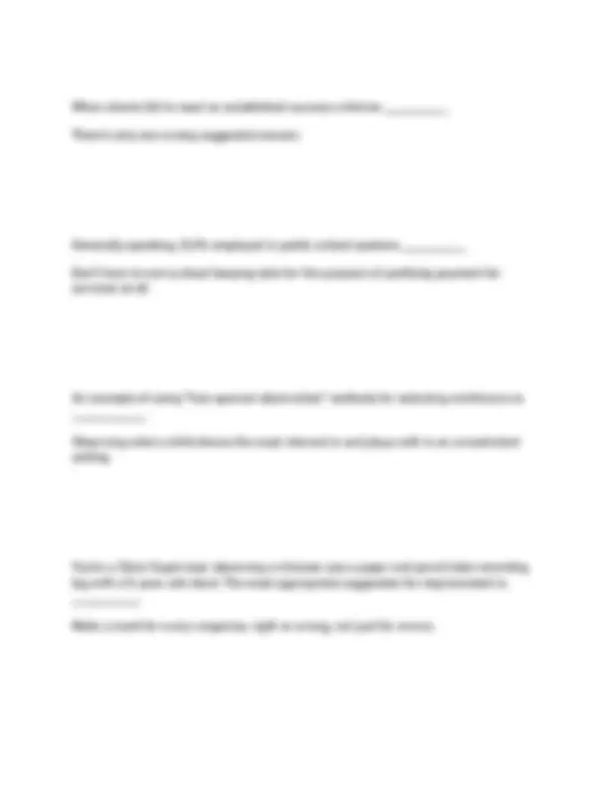
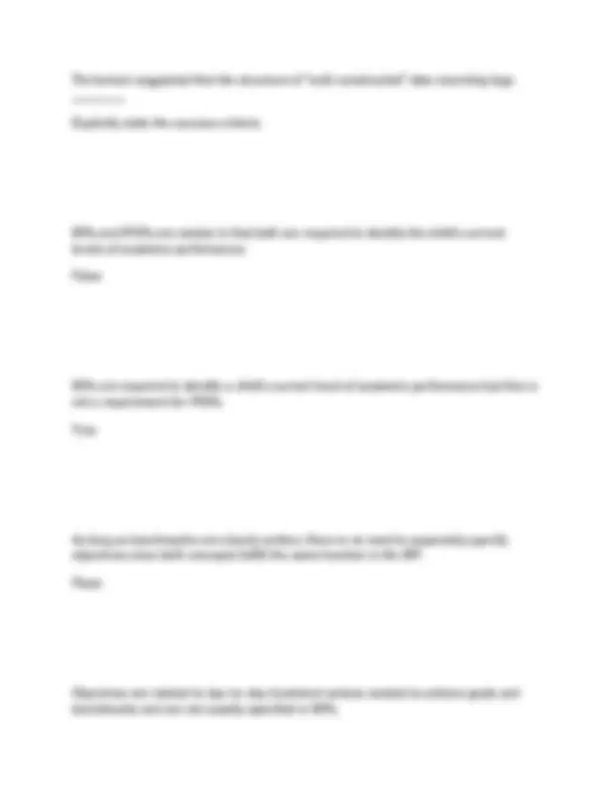
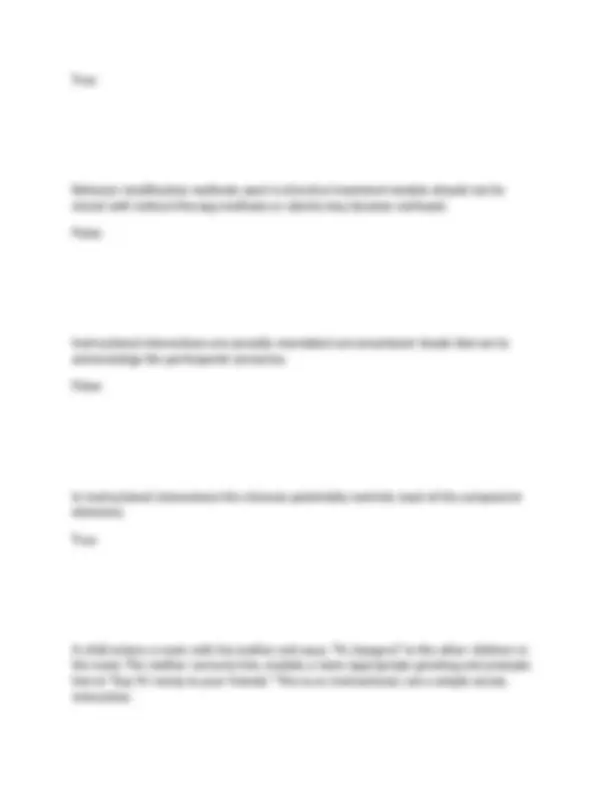
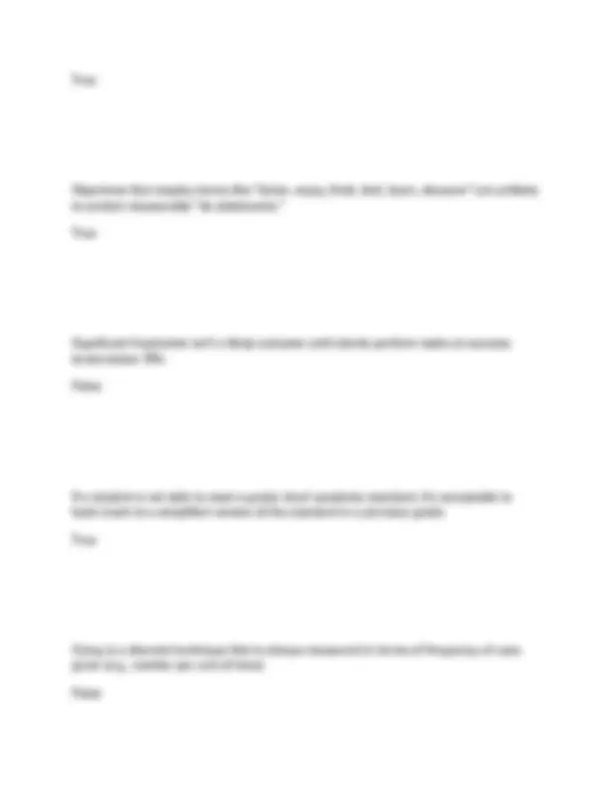
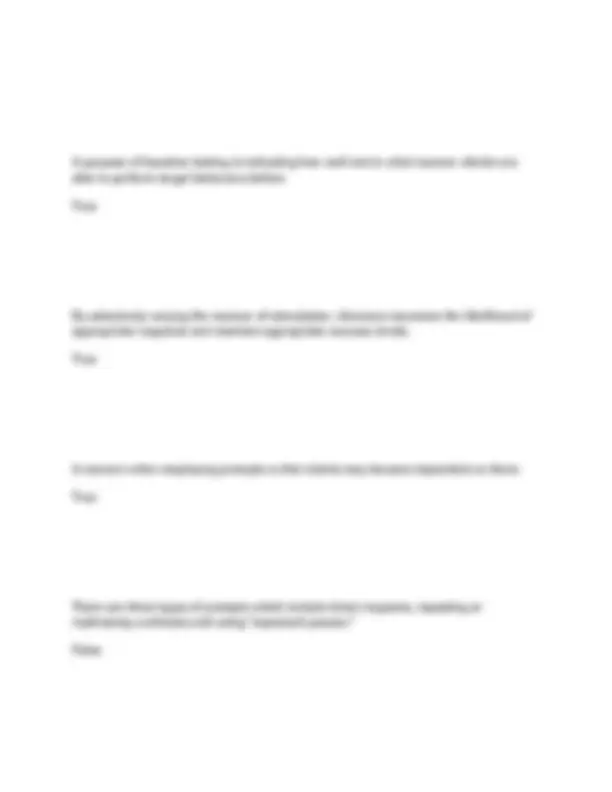
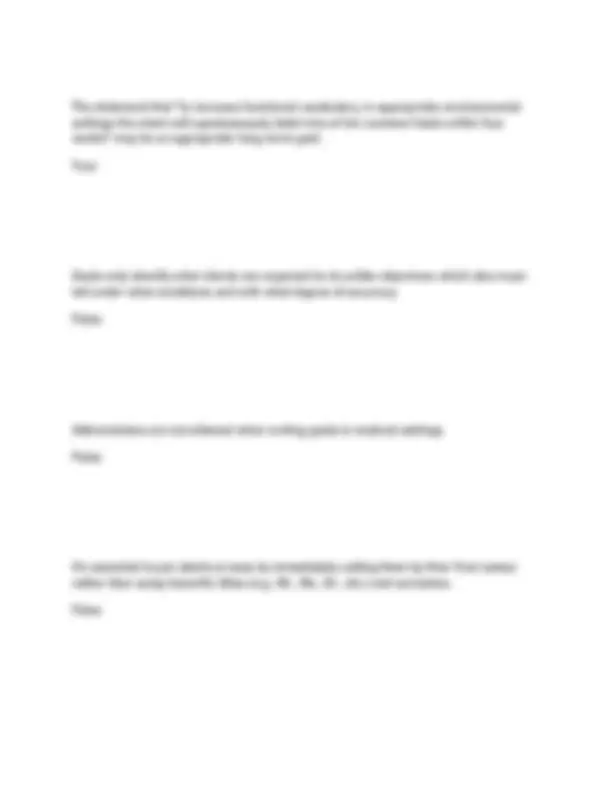
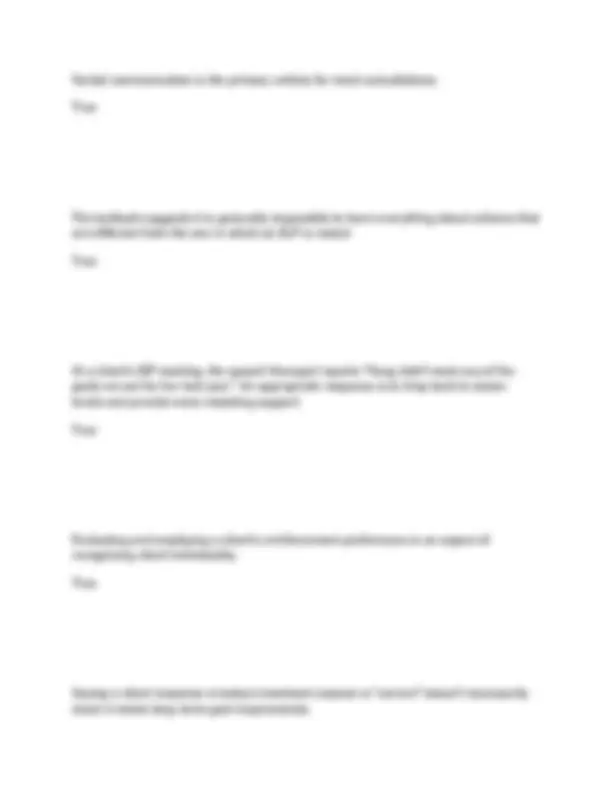
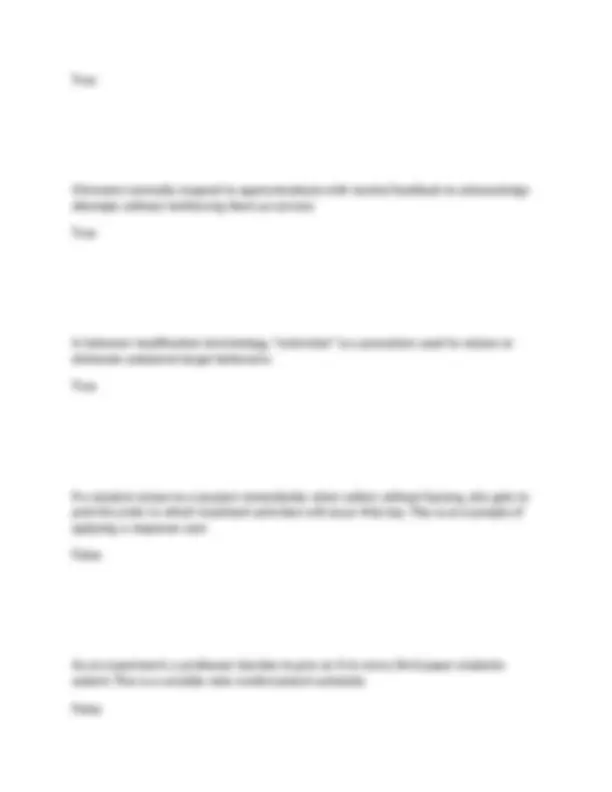
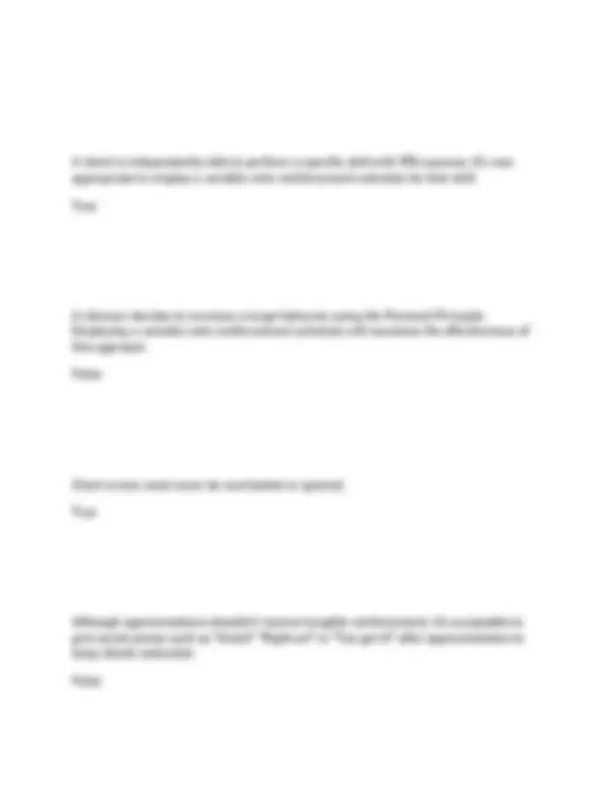
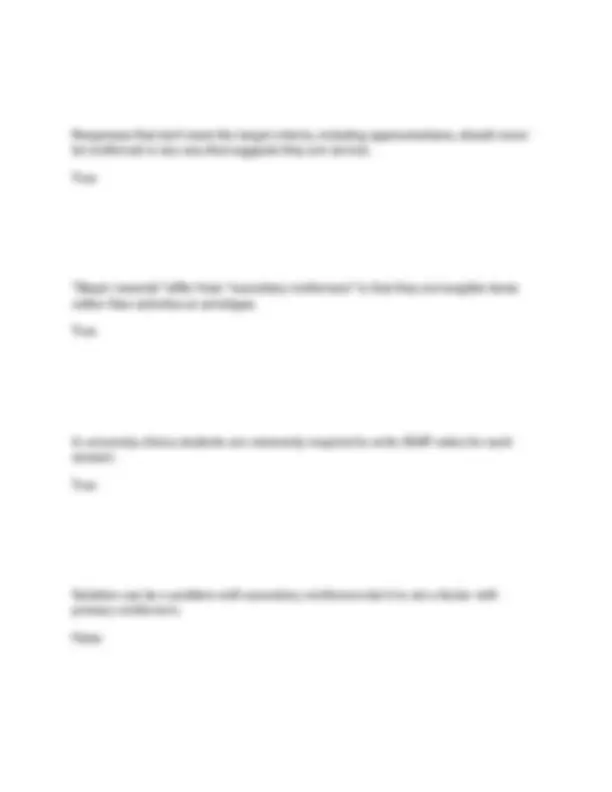
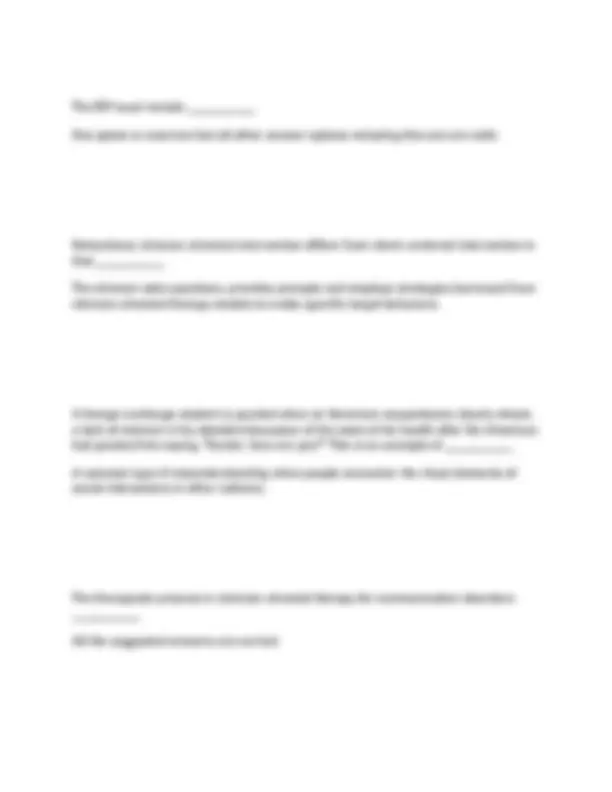
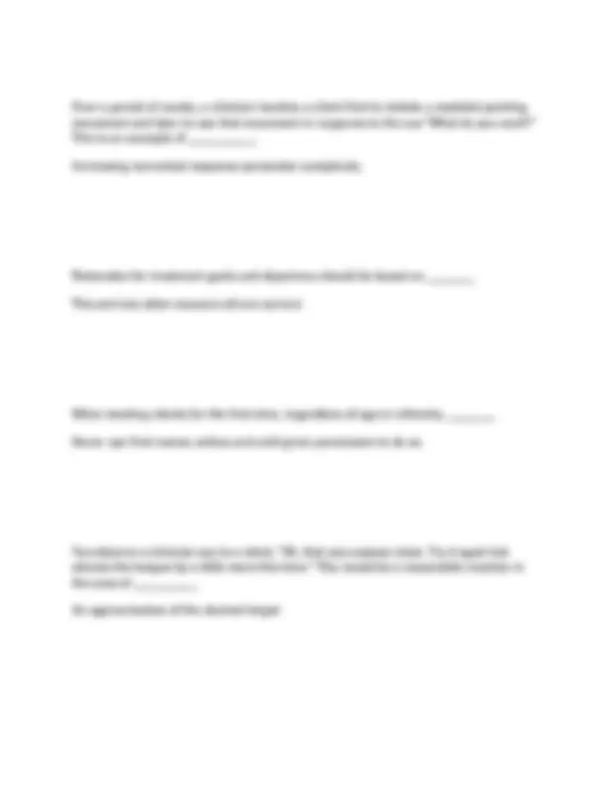
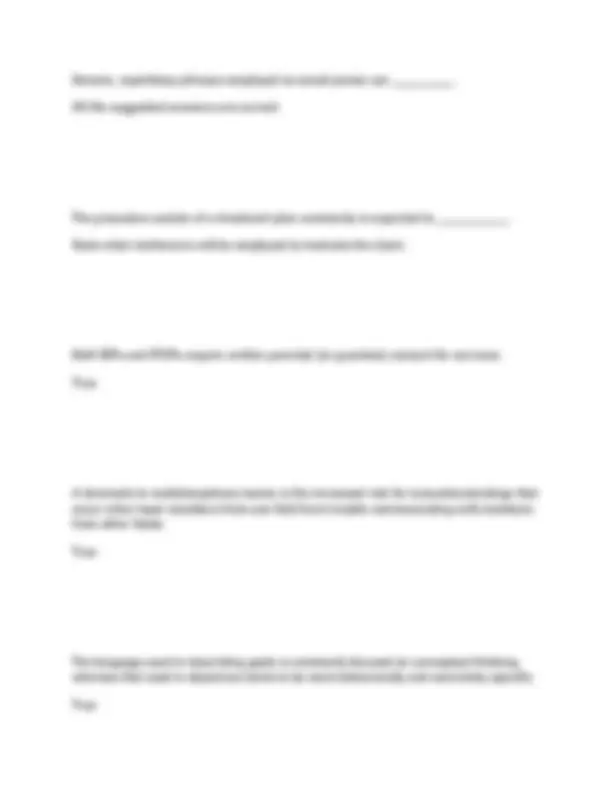

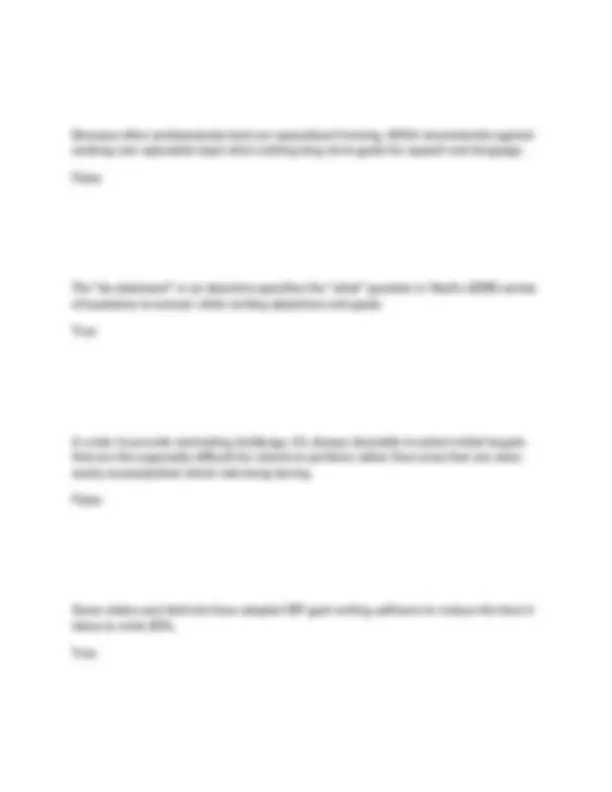
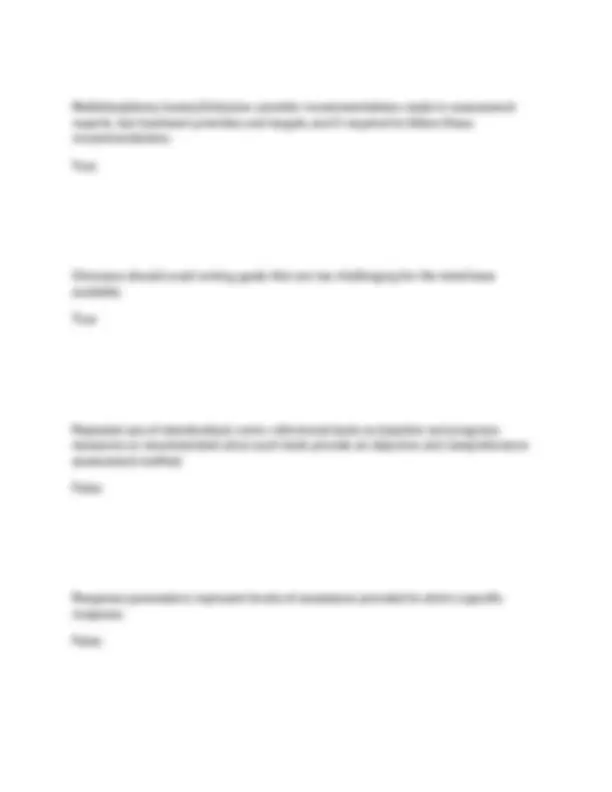
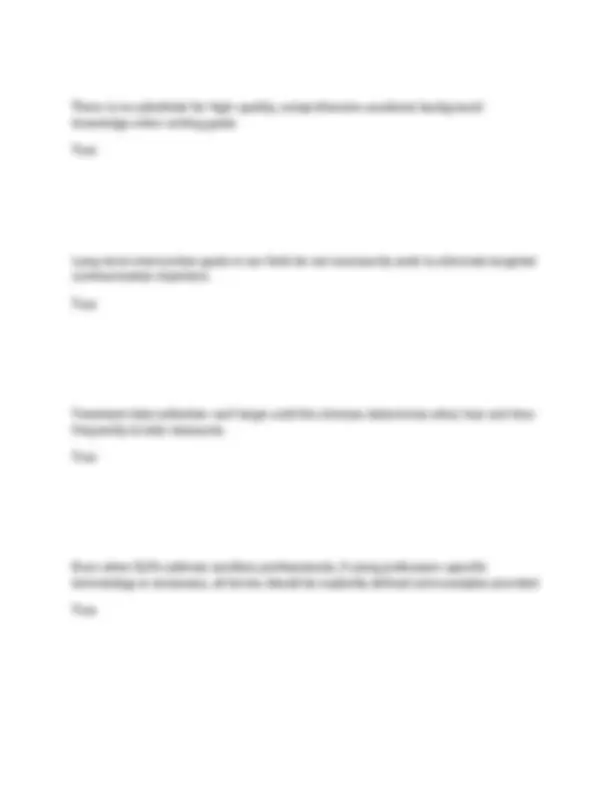
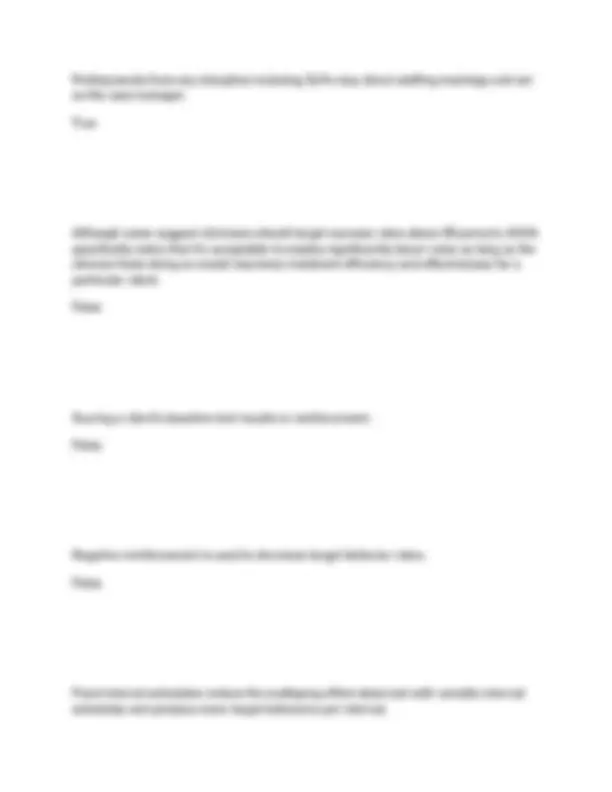
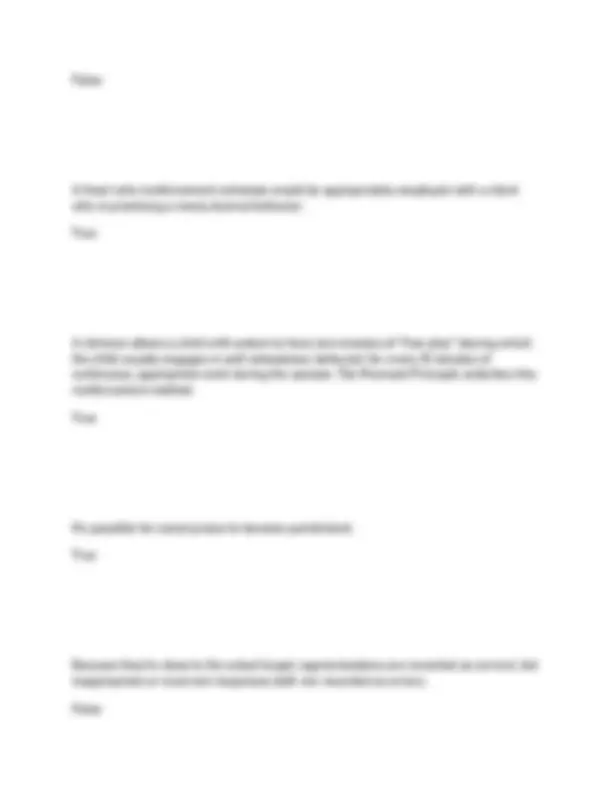
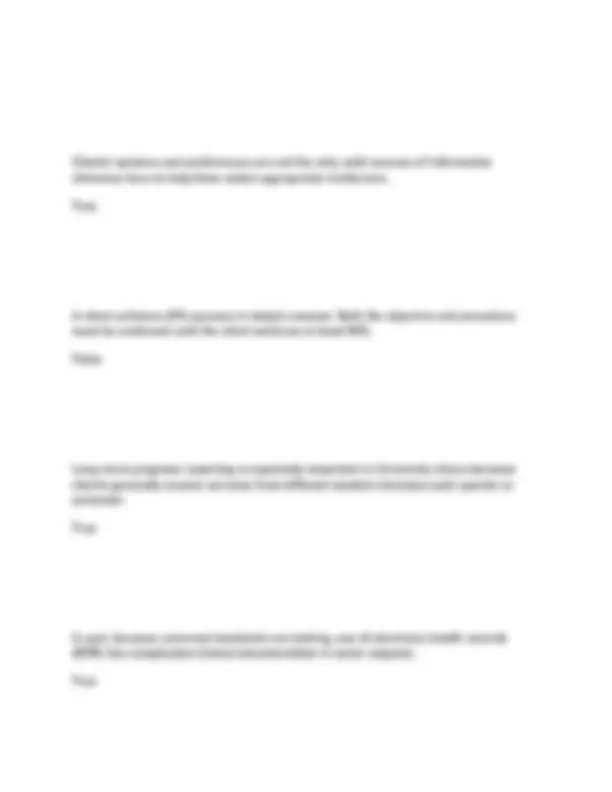
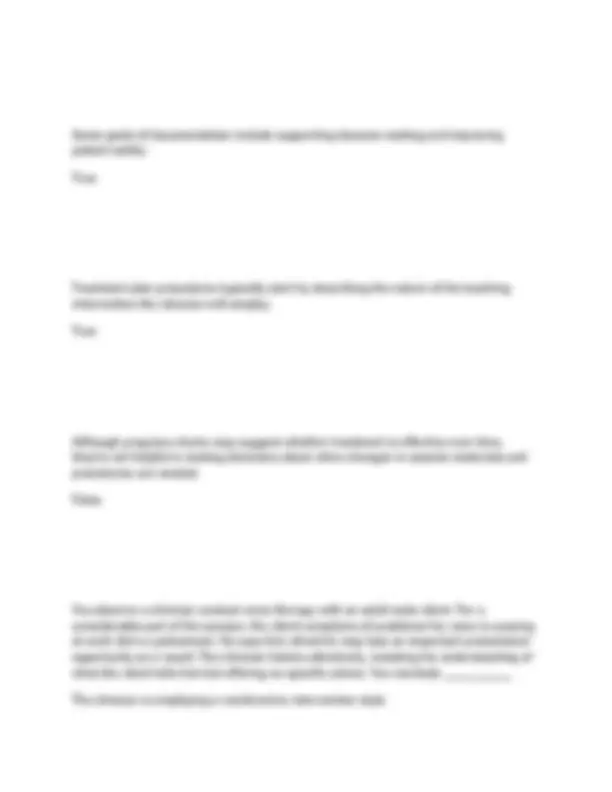
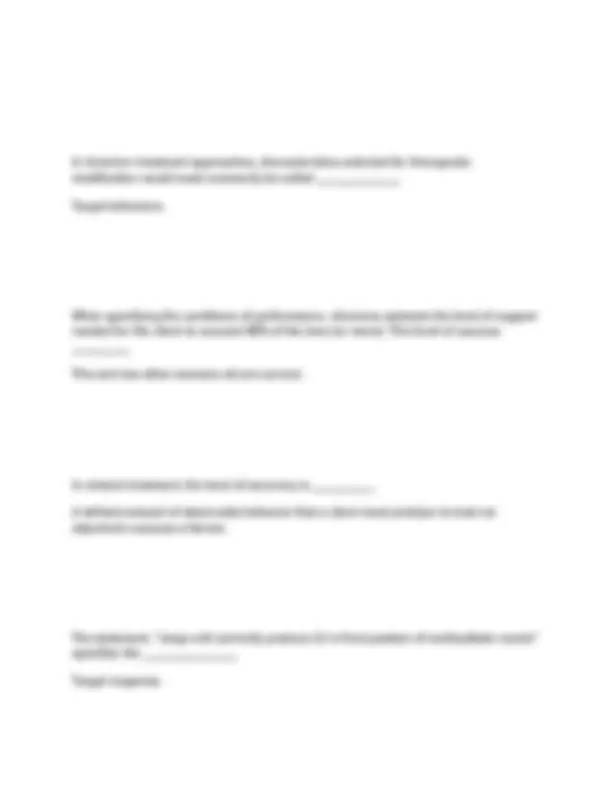
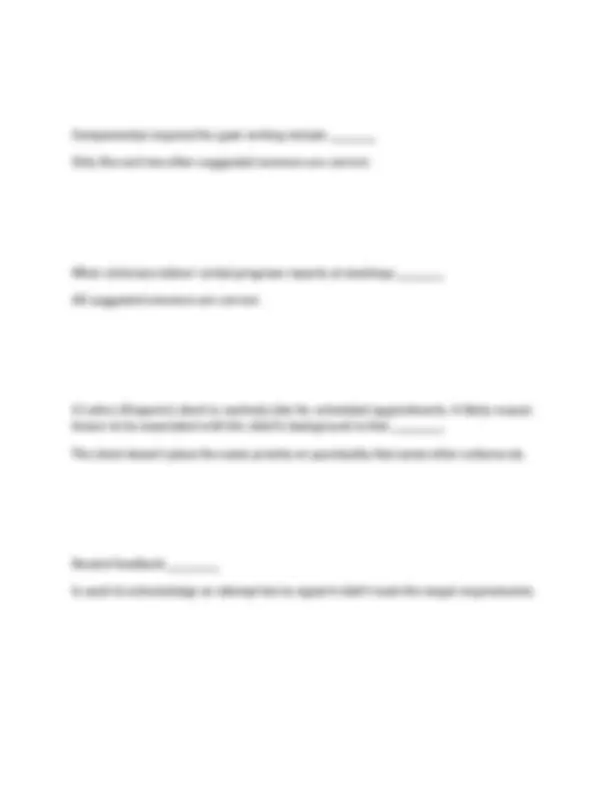
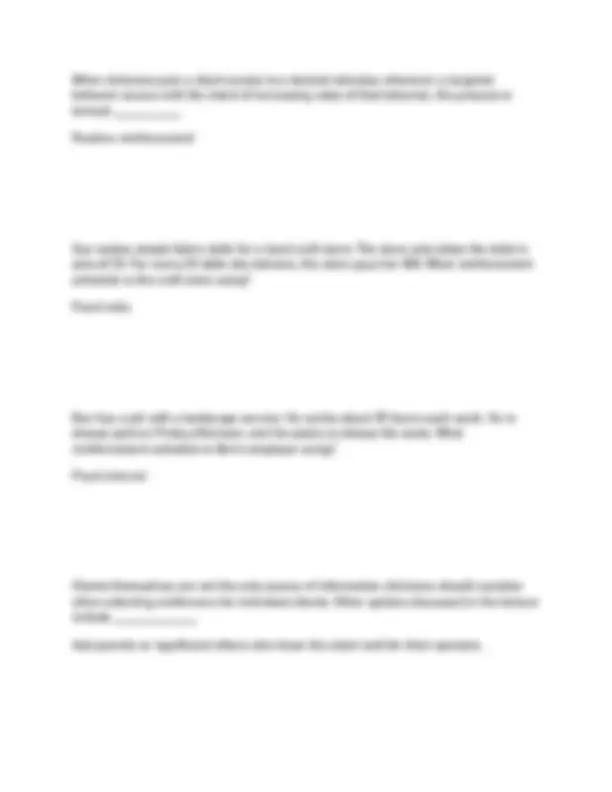
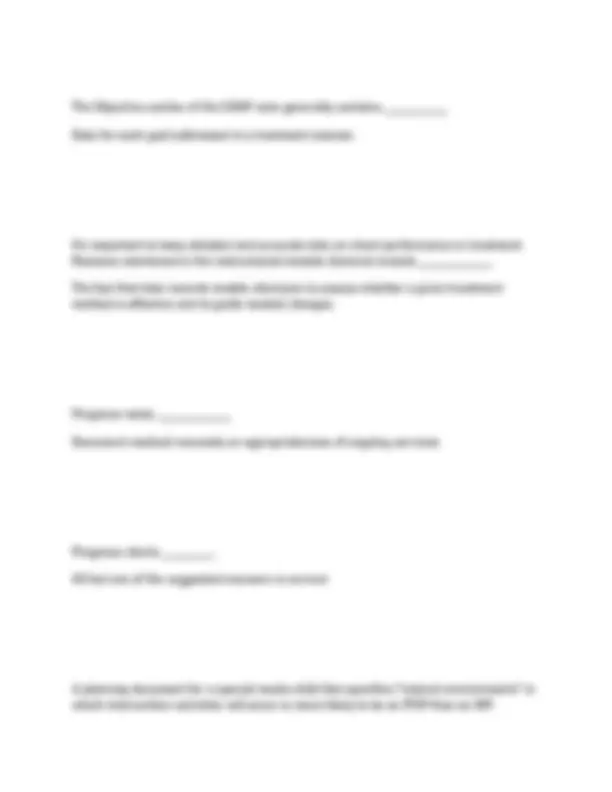
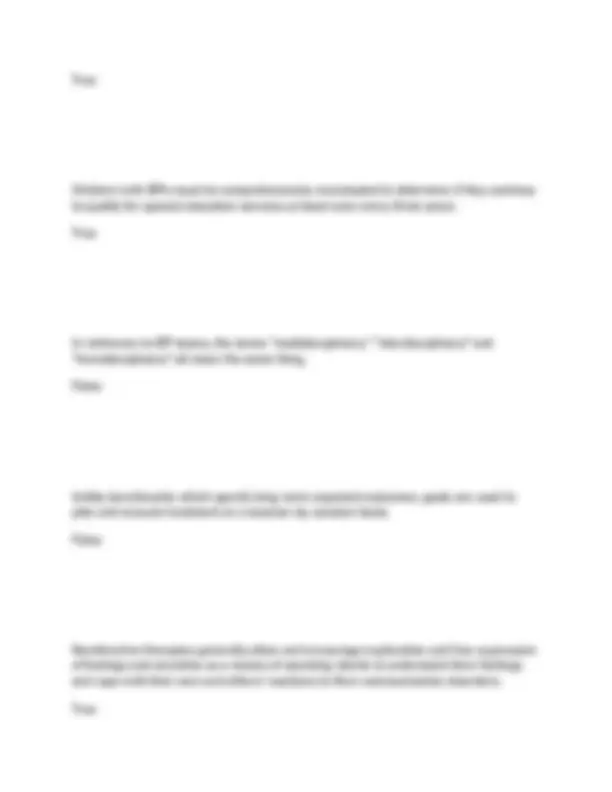
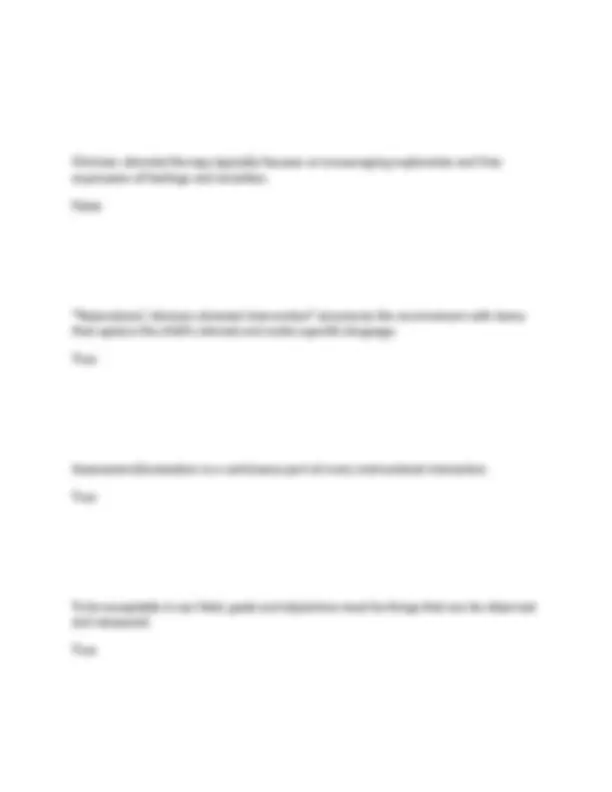
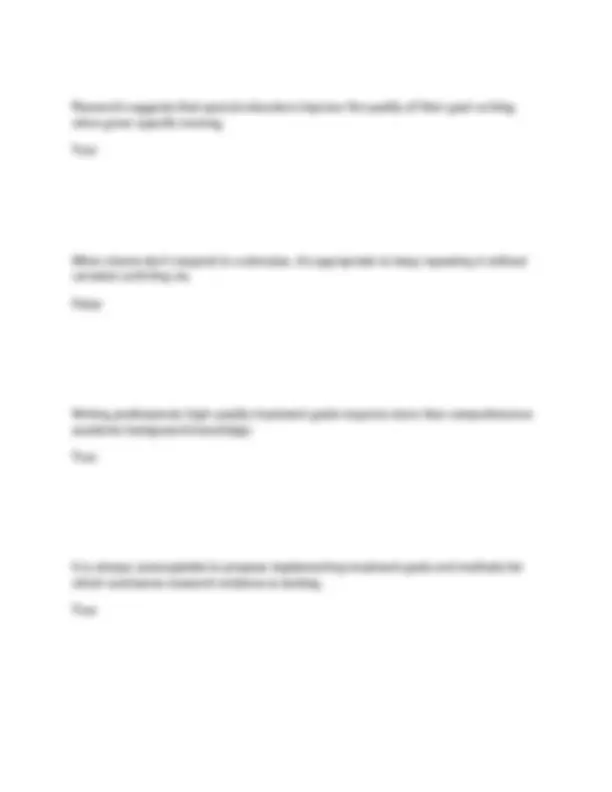
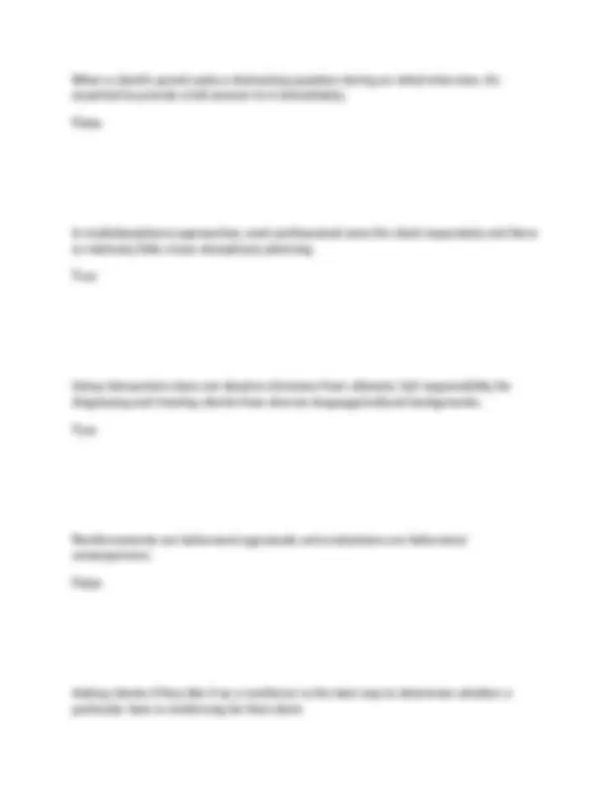
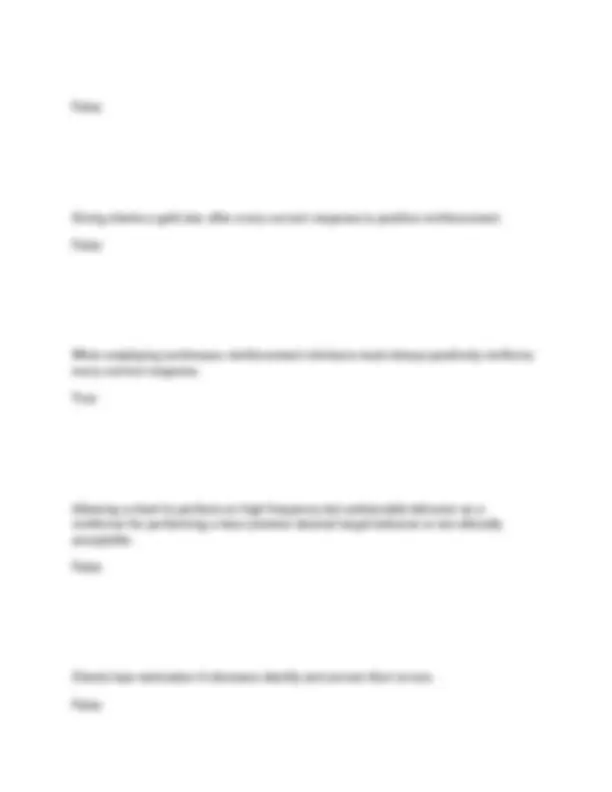
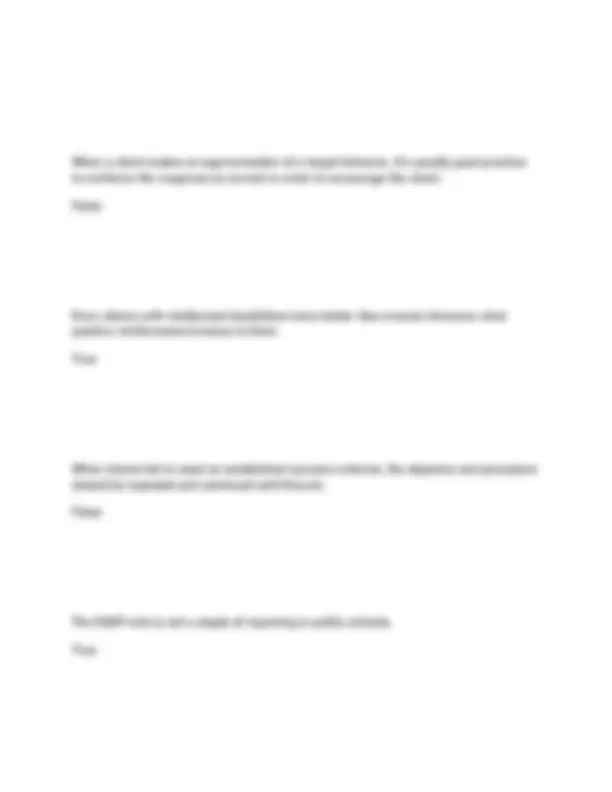
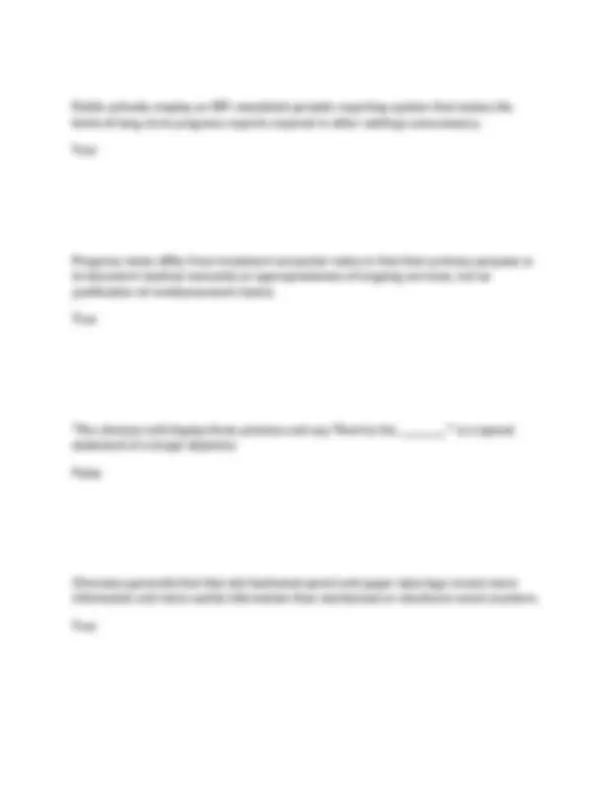
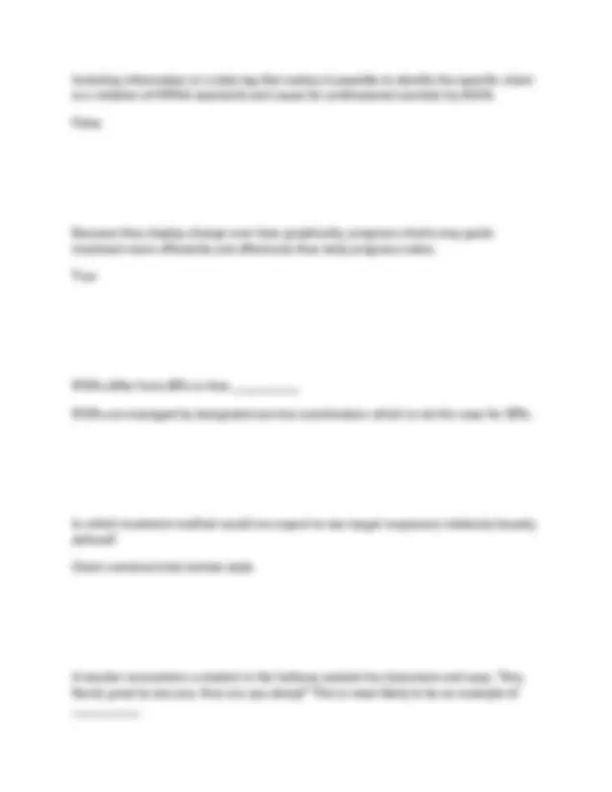
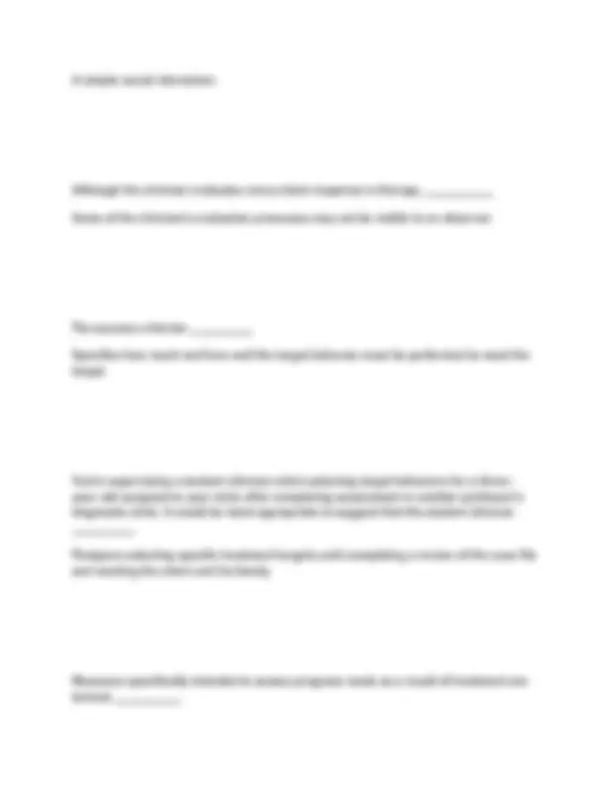
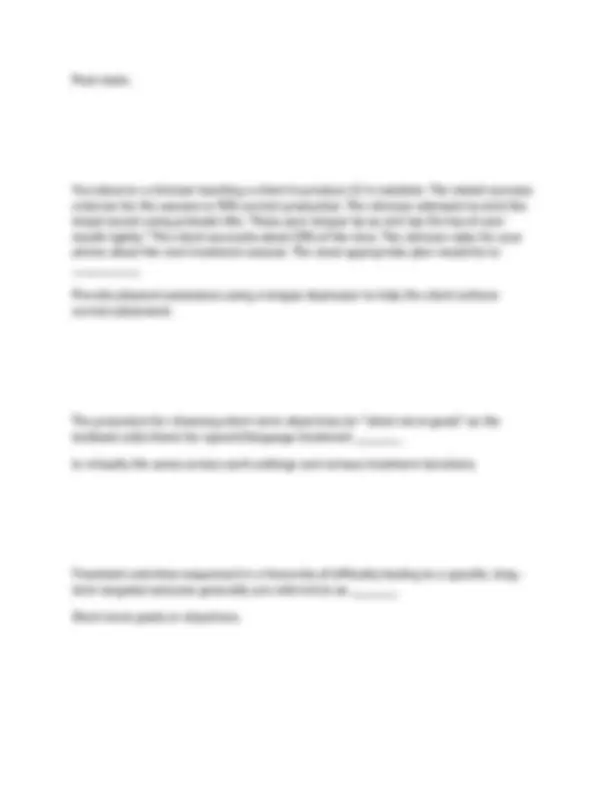
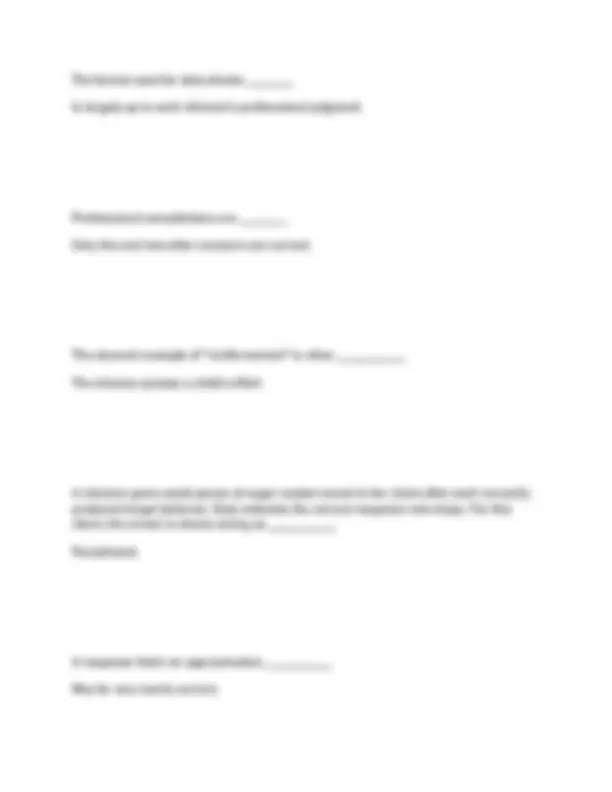
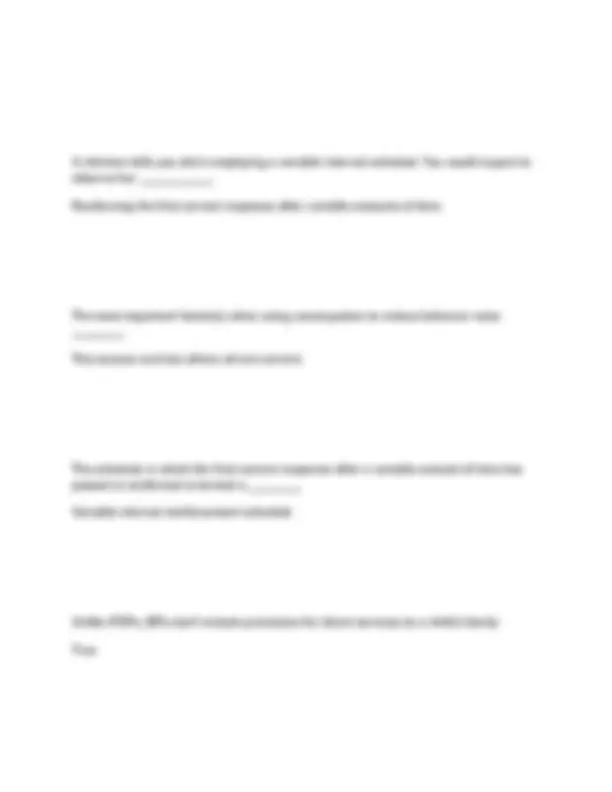
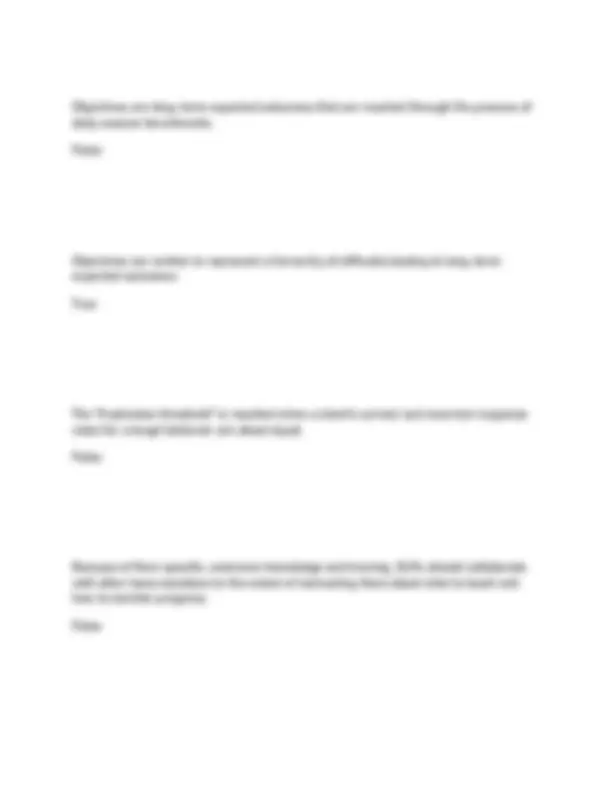
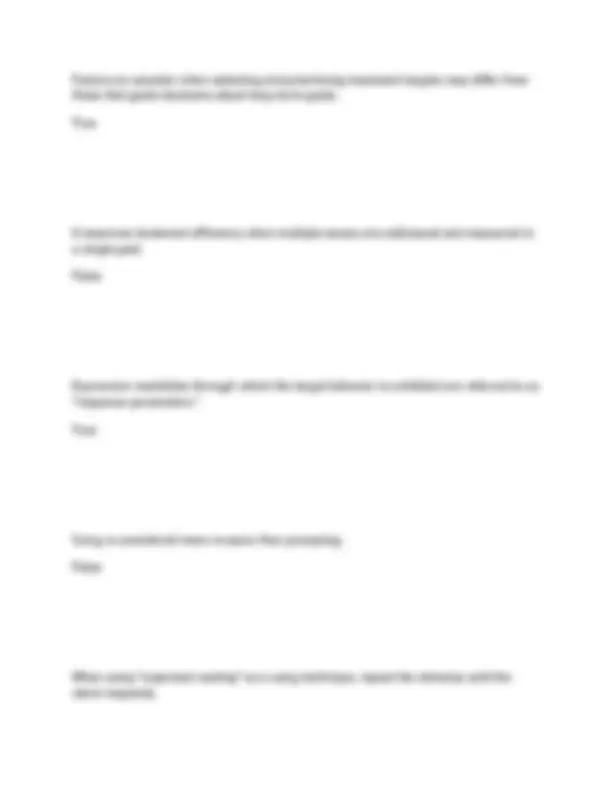
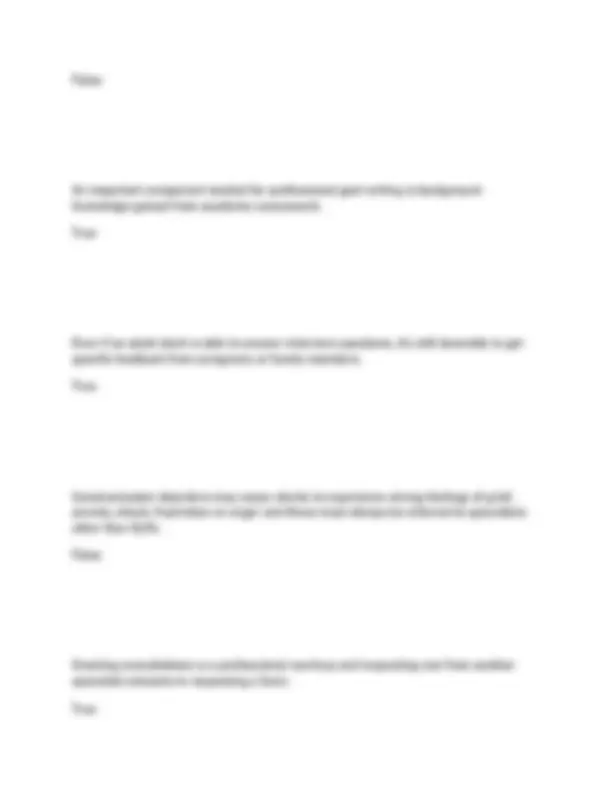
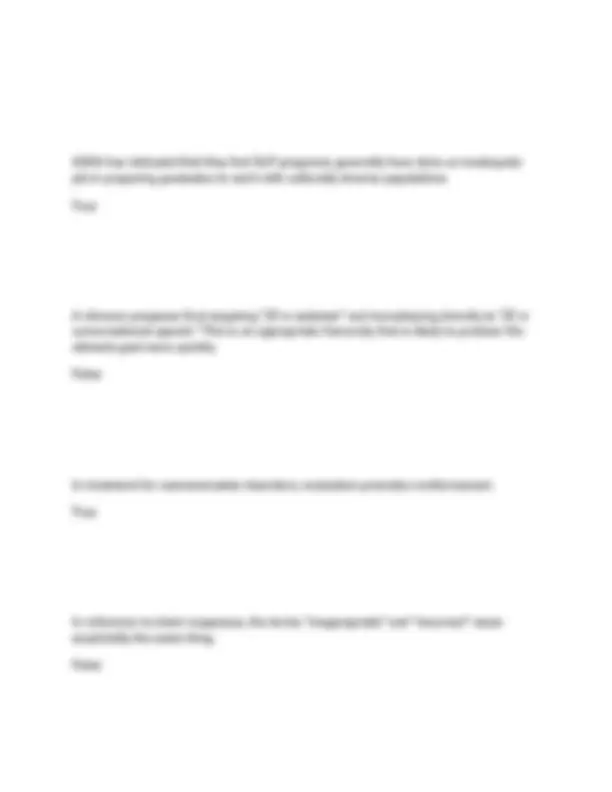
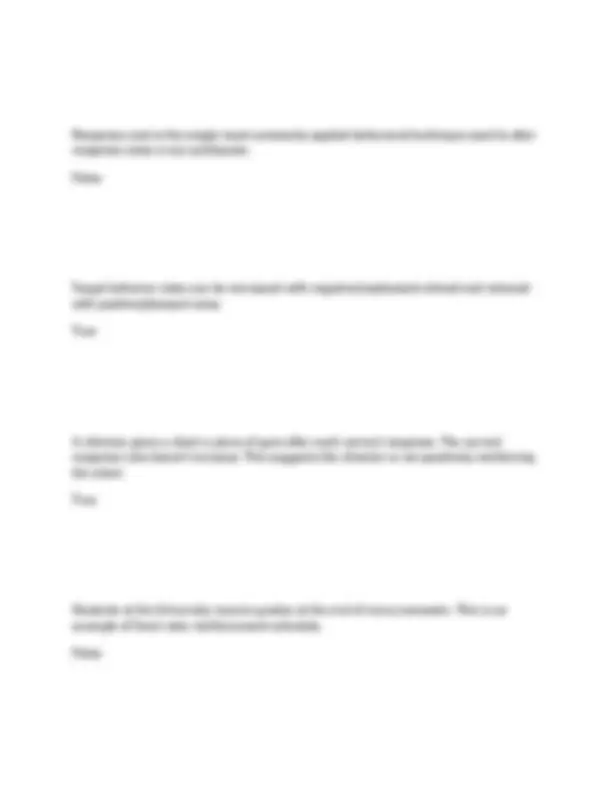
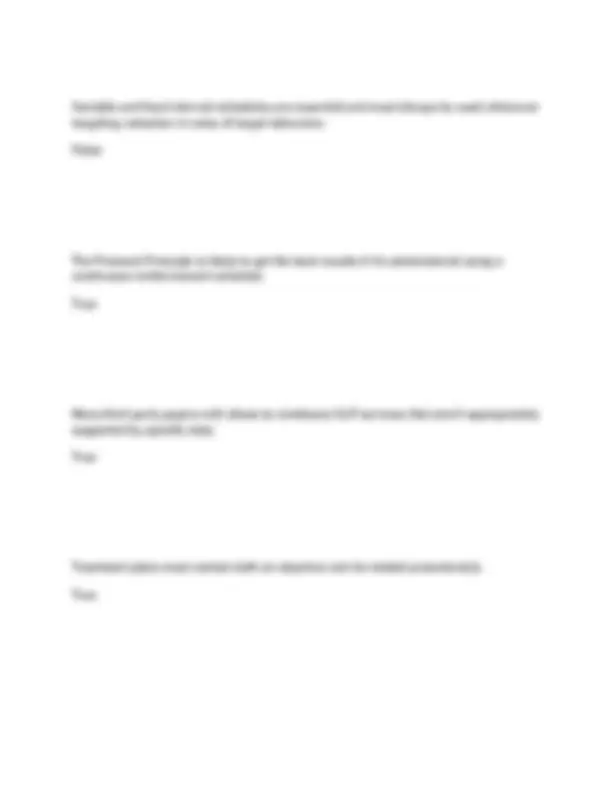
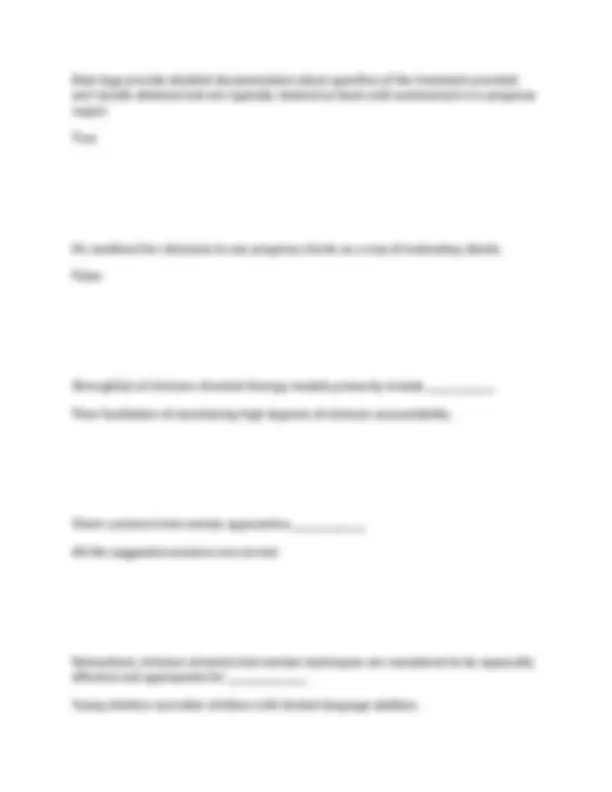
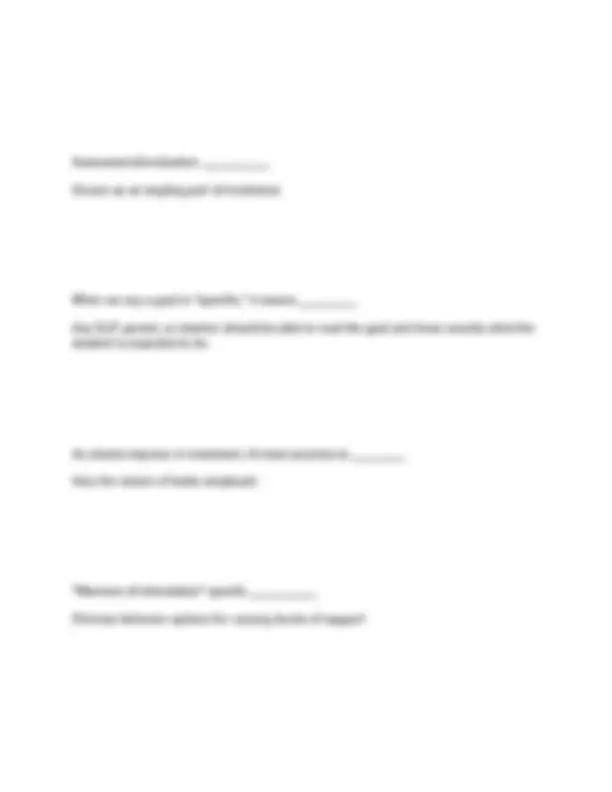
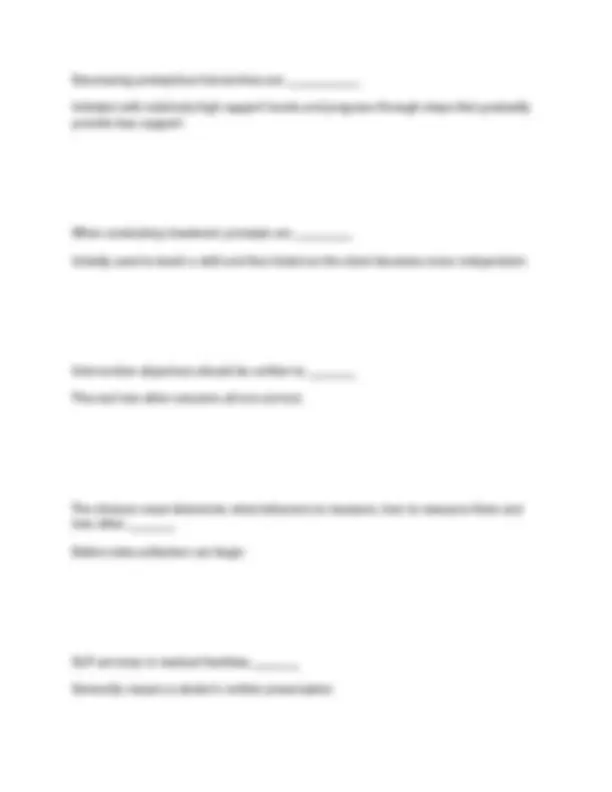


Study with the several resources on Docsity

Earn points by helping other students or get them with a premium plan


Prepare for your exams
Study with the several resources on Docsity

Earn points to download
Earn points by helping other students or get them with a premium plan
Community
Ask the community for help and clear up your study doubts
Discover the best universities in your country according to Docsity users
Free resources
Download our free guides on studying techniques, anxiety management strategies, and thesis advice from Docsity tutors
CD4690 2025 Final Exam Practice Questions With Correct Answers Score A+
Typology: Exams
1 / 102

This page cannot be seen from the preview
Don't miss anything!





























































































The textbook authors would agree that professional verbal communication requires skills that do not come naturally to anyone. True Bilingual skills do not necessarily equate to bicultural skills. True One statement that's always true about therapy is that it's not possible to require too much success. False When clinicians judge whether responses are "right" or "wrong," they're acting as evaluators. True
It's desirable to reinforce approximations of targeted responses as correct in order to encourage the client to continue trying. False In general, it's not good clinical practice to give positive feedback to approximations. True "Response cost" (for example taking a token away from a client each time he makes an incorrect response) is not punishment. True A clinician gives a client a piece of gum after each correct response. The correct response rate doesn't increase. This suggests the clinician is not positively reinforcing the client. True
False Because of their advanced training and clinical expertise, competent clinicians independently know what reinforcers to use with individual clients. False Because progress notes provide justification of the medical necessity of treatment, they must be completed after every treatment day and every treatment service. False Treatment encounter notes must document every treatment day and every therapy service. True Specification of reinforcers to be employed and planned response to errors belong in a treatment plan's "procedure" section, not in the "objective." True
Event counters only record generic success rates, not specific errors or patterns of errors. True ASHA mandates client names must be written in full on data recording logs so that there is no possibility of confusing which client produced the recorded results. False Ideally, data plotting for each client's long-term progress chart begins when the clinician administers initial baseline assessments. True IEPs must be reviewed by the full multidisciplinary team at least every six months. False
A professor enters a university classroom and greets the students. This is an instructional interaction. False An IFSP is generally broader than an IEP and applies primarily to families of children from infancy through age 3 years. True IFSPs focus on children's educational needs while IEPs target supporting families to help them enhance their child's development. False Specialists in a "multidisciplinary" team are envisioned as communicating with other team members in a "top down" manner. True The statement, "The client will produce /s/ in isolation correctly in 8 of 10 opportunities in response to a clinician model" is typical of a benchmark.
False The concept of "benchmark" occurs only in the IEP process and is not a component element of an IFSP. True Behavior modification techniques are applied to treatment of communication disorders because communicative acts largely consist of observable behaviors. True Client-centered intervention methods seek to find treatment targets that emerge spontaneously out of the client's immediate interests and communications. True Ongoing assessment is a required part of effective treatment. True
First and foremost, goals must address issues that evaluation has determined are significant areas of concern for the client. True The terms prompt and cue are largely synonymous which explains why clinicians appropriately use them interchangeably. False Formal written formats are the only appropriate, professional ways to communicate goals to clients and others. False Although the evaluation phase is an essential part of instructional interactions, it often may not occur explicitly or overtly. True An objective that states, "The client will produce /z/ correctly 90% of the time" specifies an appropriate condition statement. False
A client's insurance company has a policy of only funding SLP treatment services for aphasia for 6 months post stroke. This factor should not be considered when selecting and prioritizing the client's treatment goals. False When taking a baseline, the clinician must not provide instruction on how the response should be performed nor information about how well the client is performing the target behavior. True Eliciting verbal responses using prompts/cues is the least supportive level in the verbal response parameter hierarchy. False A clinician directs a client to "Say /t/" and waits, saying nothing but looking expectantly at the client for 5 seconds. This is an appropriate cuing technique. True
SLPs are expected to request consultations from and provide consultations to other professionals any time they are needed. True The only way to judge what clients actually consider positive reinforcement is to listen to what they say they like. False The only way to tell if a specific consequence is acting as positive reinforcement or as punishment is to evaluate its effect on behavior. True When positive reinforcement occurs, behavior frequency always increases. True
A clinician has used continuous reinforcement while teaching a new behavior. The most appropriate schedule for practicing that new learning is variable ratio. False The Premack Principle says that behaviors that happen a lot can be used to reinforce and increase the rate of other behaviors that only happen occasionally True The employing social praise all that's necessary is to use an enthusiastic voice. False Because reinforcers can lose their power to motivate as a result of "satiation," it's important for clinicians to come to all sessions with a variety of alternative activities and reinforcers prepared in advance. True
Characteristics(s) selected for therapeutic modification are called __________ in directive therapy models. Target behaviors Techniques associated with this intervention style are considered likely to be especially appropriate and effective with adults and older children who are self- motivated. Clinician-directed intervention. The condition statement _____________ Defines when, where, with whom and what materials and prompts/cues will be used in treatment. Objectives are ___________ Intermediate steps leading to expected outcomes. Behavioral objectives _______________
Consist of an explicit "do statement," a "condition of performance," and a "success criterion." The statement that "Jorge will produce the target behavior by imitating clinician models" sprecifies the ______________ Conditions of performance. Prompting ____________ Gives some level of explicit directions or physical guidance to produce a desired target. Indirectly support and guide production of target responses. Cues Type(s) of cues include ______________ Open-ended questions.
Clients are likely to become permanently bored, frustrated and/or resistant to therapy when clinicians _____________ Only one of the other suggested answers in wrong. In reference to behavior modification theory, the purpose of extinction is _____________ Positive and negative reinforcement are wrong but all other answers are correct. When clinicians remove or discontinue a stimulus a client dislikes whenever a targeted behavior occurs with the intent of increasing rates of that behavior, the process is termed _____________ Negative reinforcement. In general, when clinicians identify and correct incorrect responses ____________ Clients know specifically what the target is and progress faster. You observe the following interaction while watching a student clinician conducting therapy ______________
CLINICIAN: Say, "s-s-s-s-s" CLIENT: "Th-th-th-th-th." CLINICIAN: Okay. Try again. Say, "s-s-s-s-s" CLIENT: "Th-th-th-th-th." CLINICIAN: Yeah, good. Let's do it again. Say, "s-s-s-s-s" CLIENT: "Th-th-th-th-th." CLINICIAN: Unh, hunh. And again..... etc. The clinician asks for your comments after the session is over. The most important thing to mention about this clinician's use of social praise is ____________ The clinician needs to stop reinforcing errors. A four-year-old boy with a language processing disorder has just been admitted into your caseload. In your initial sessions it's likely to be most motivating and age- appropriate to start by using ____________ Various types of primary reinforcers. A clinician conducts a reinforcer preference assessment in which she allows the client to select a favored item from several choices. The item chosen is taken out of the array and the client is again asked to select the most preferred item. The array diminishes in size on each selection. This method ______________ Is the quickest method of selecting reinforcers using a trial-based approach.